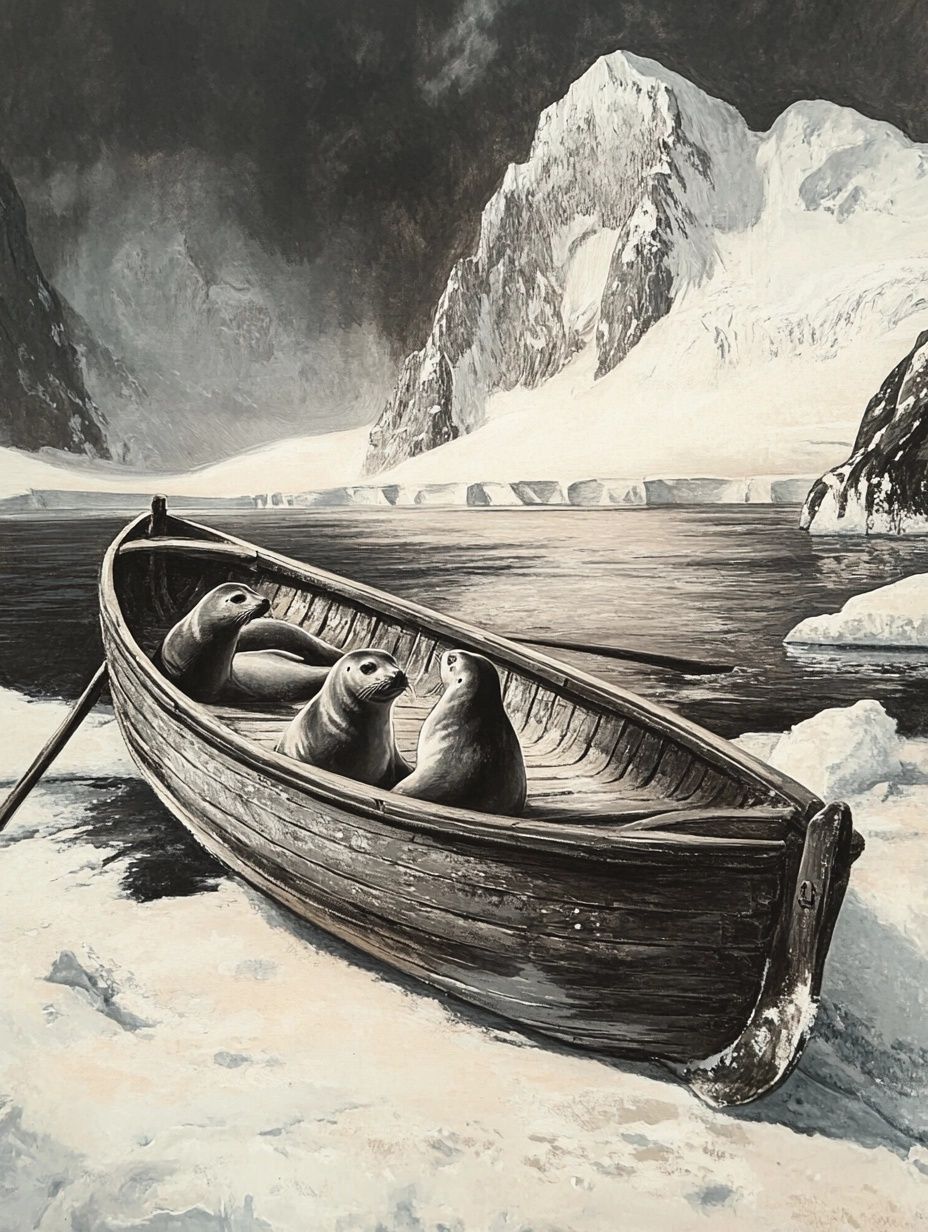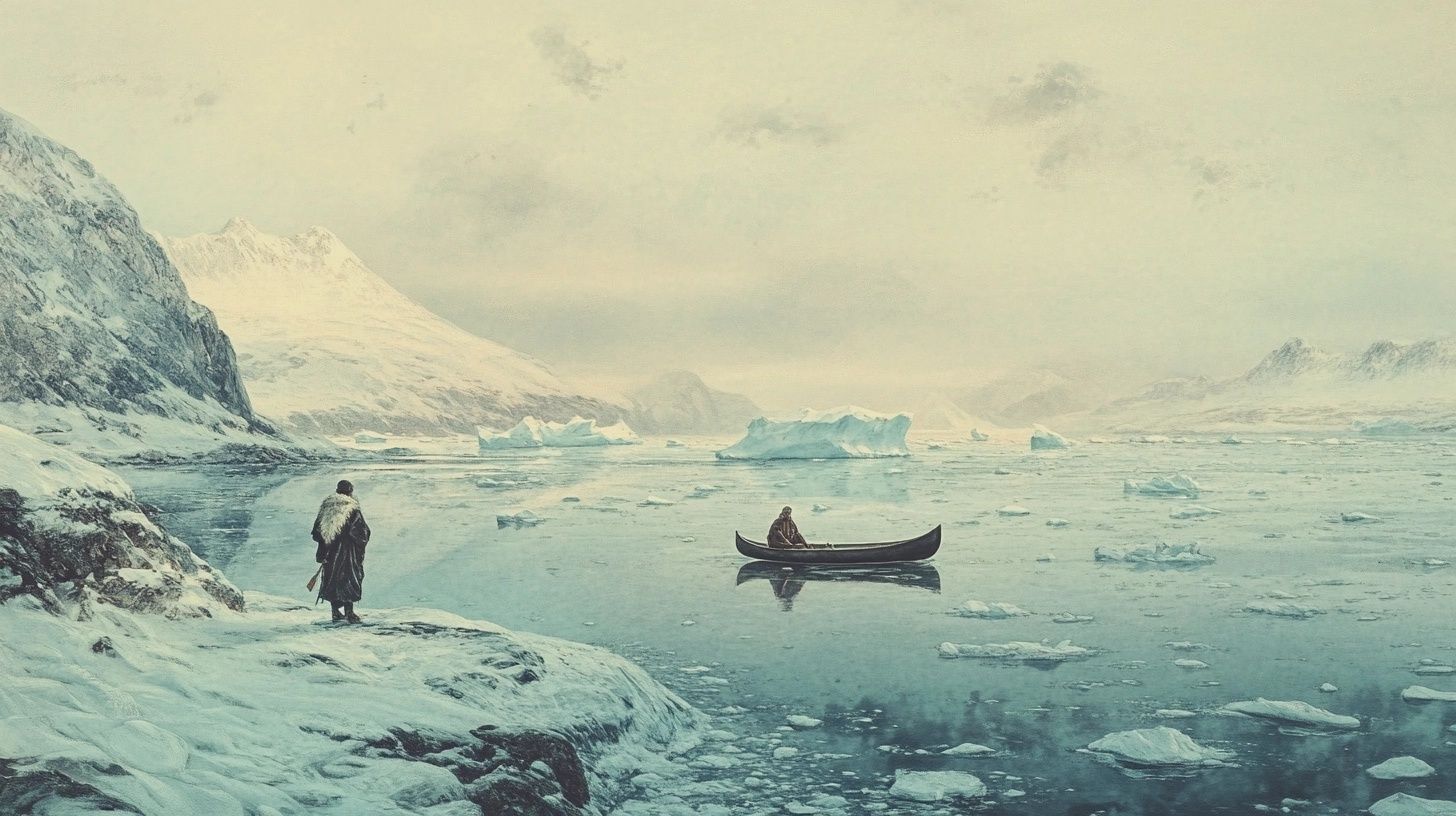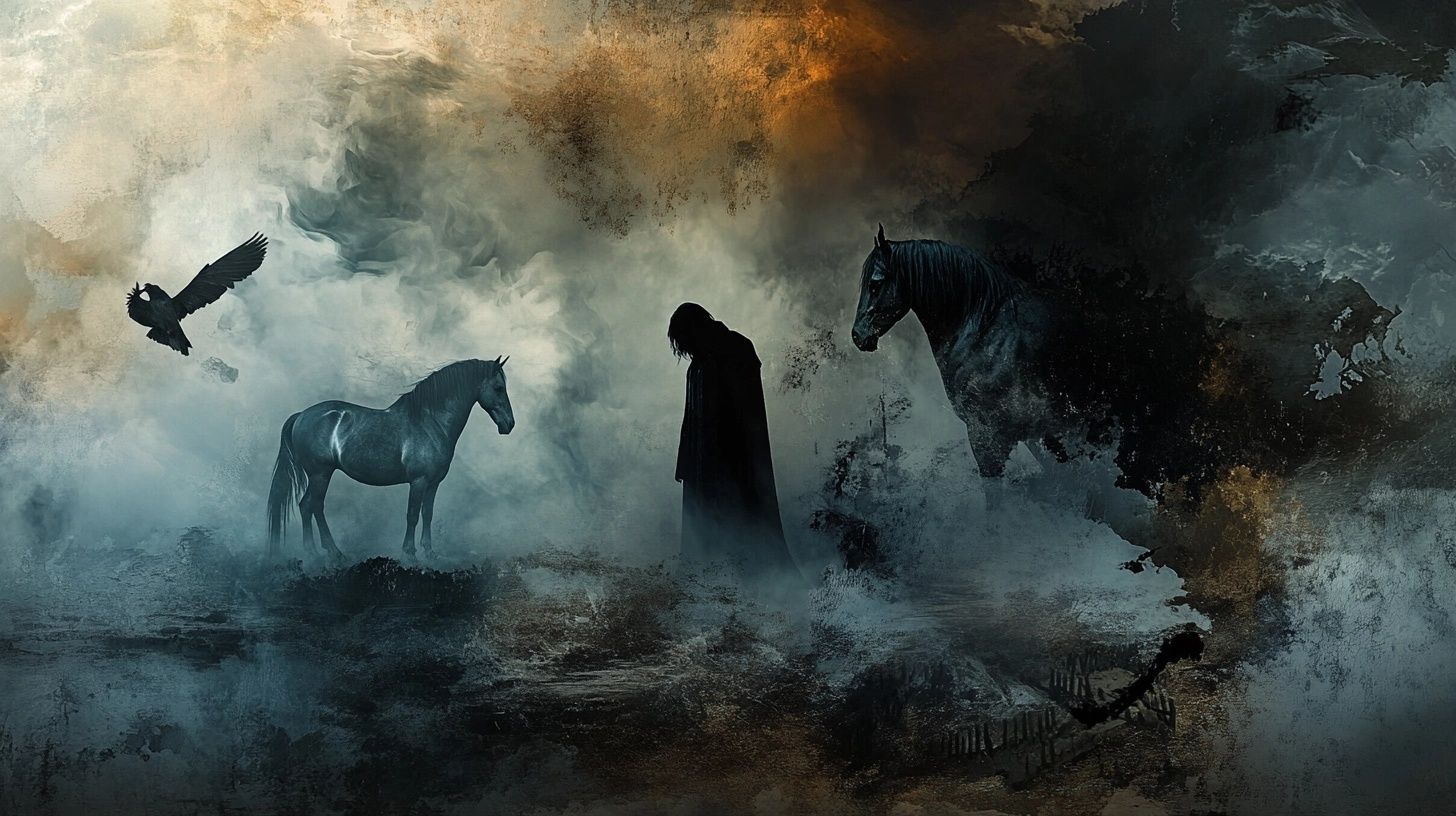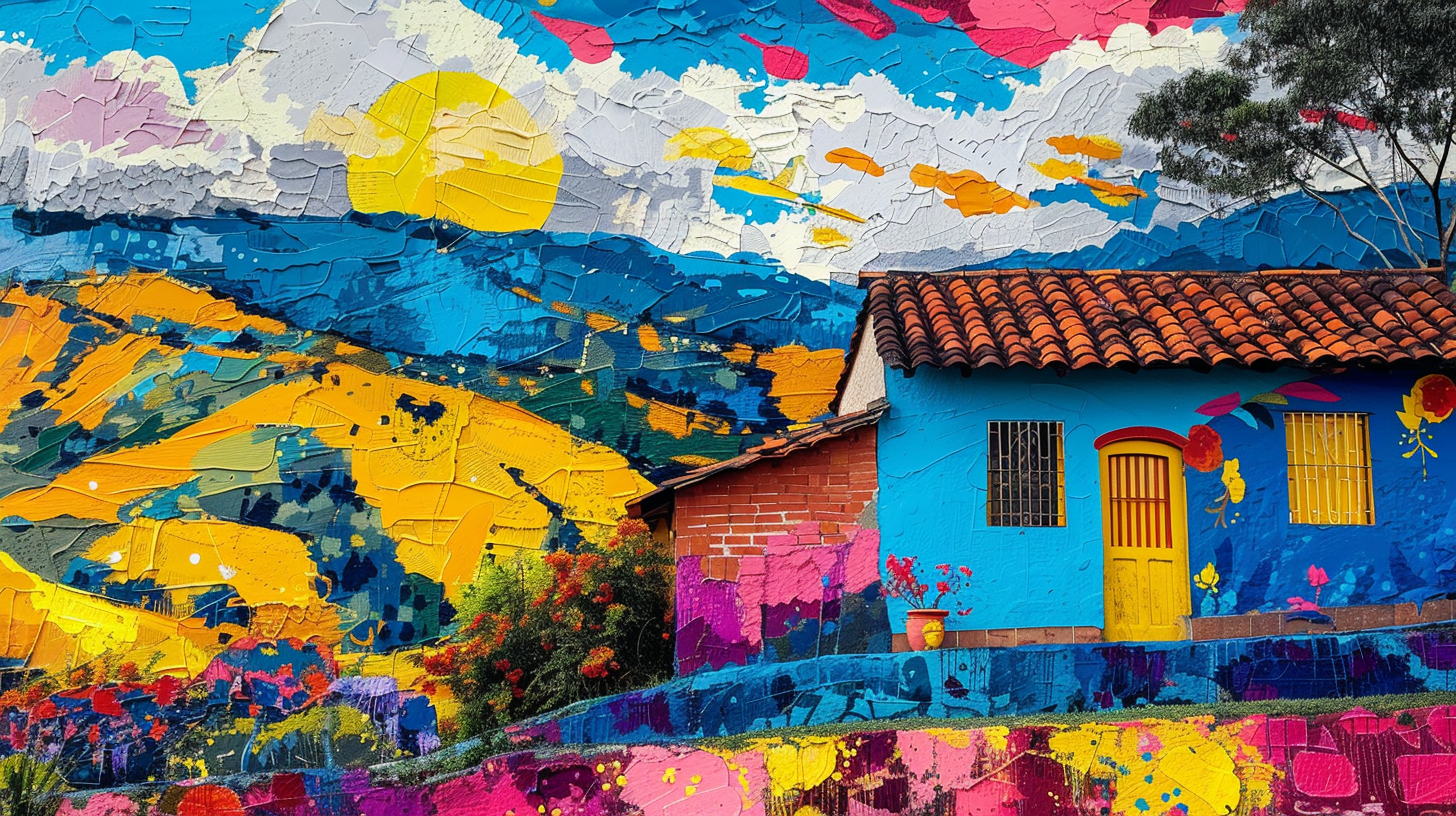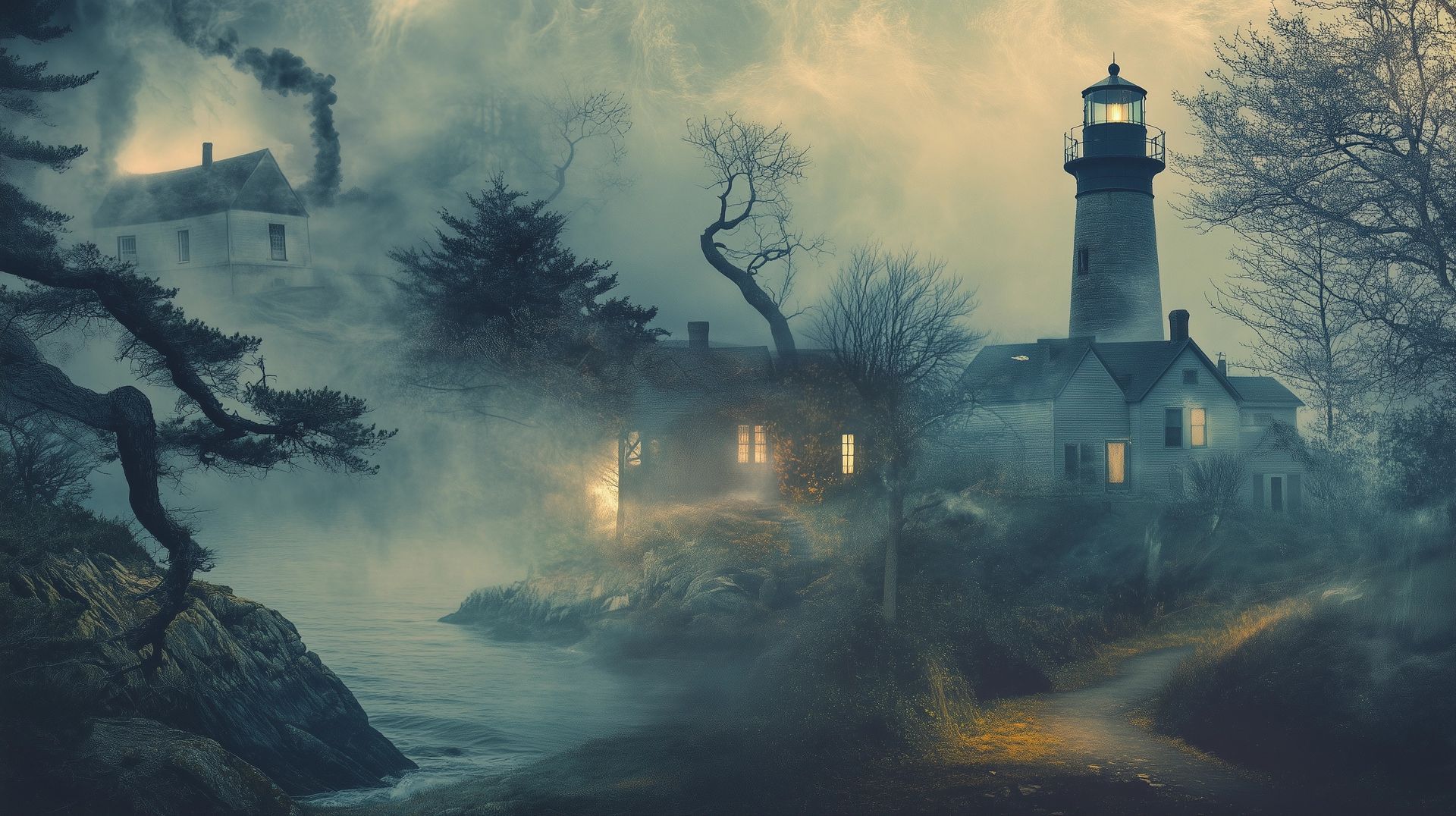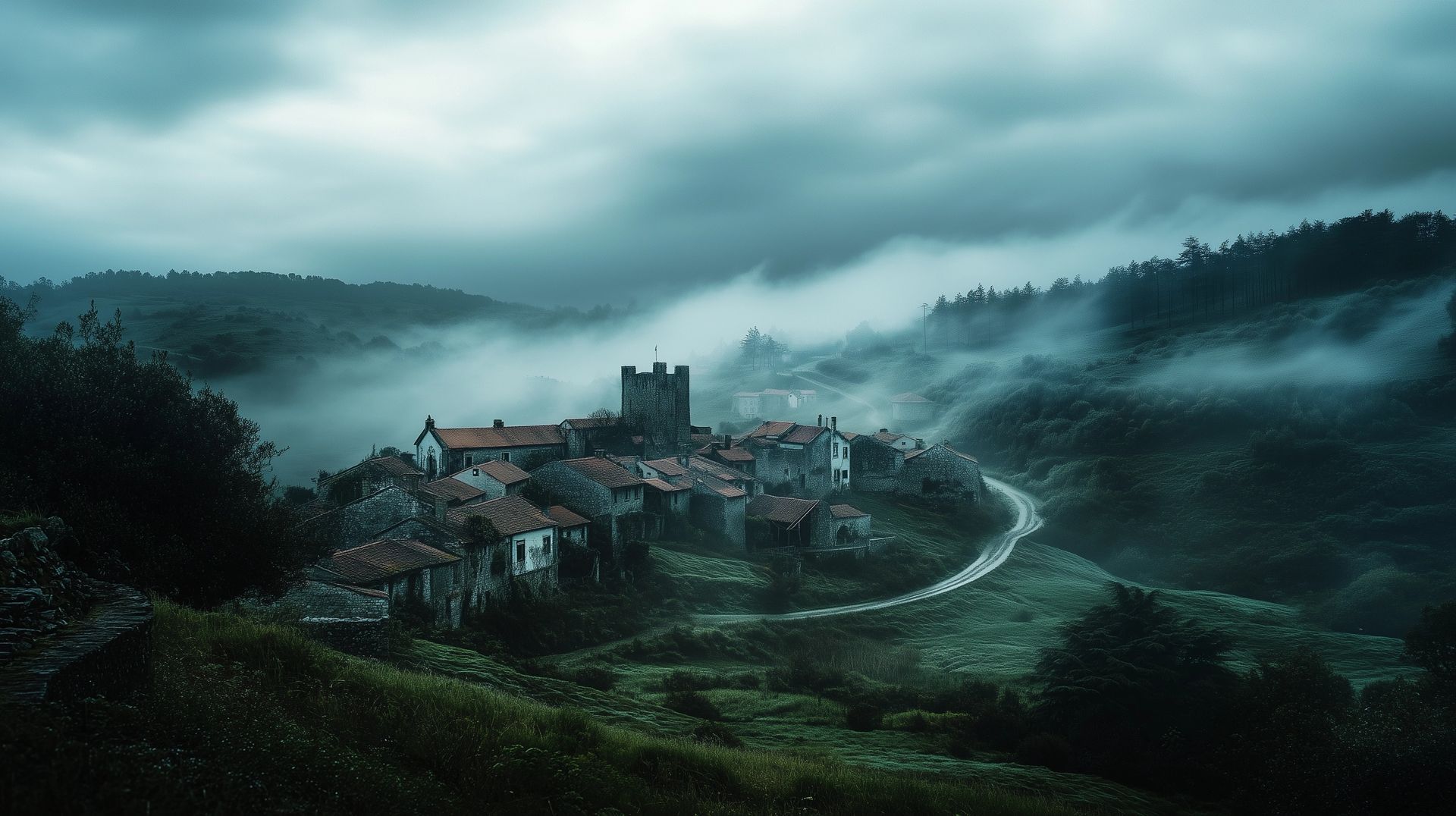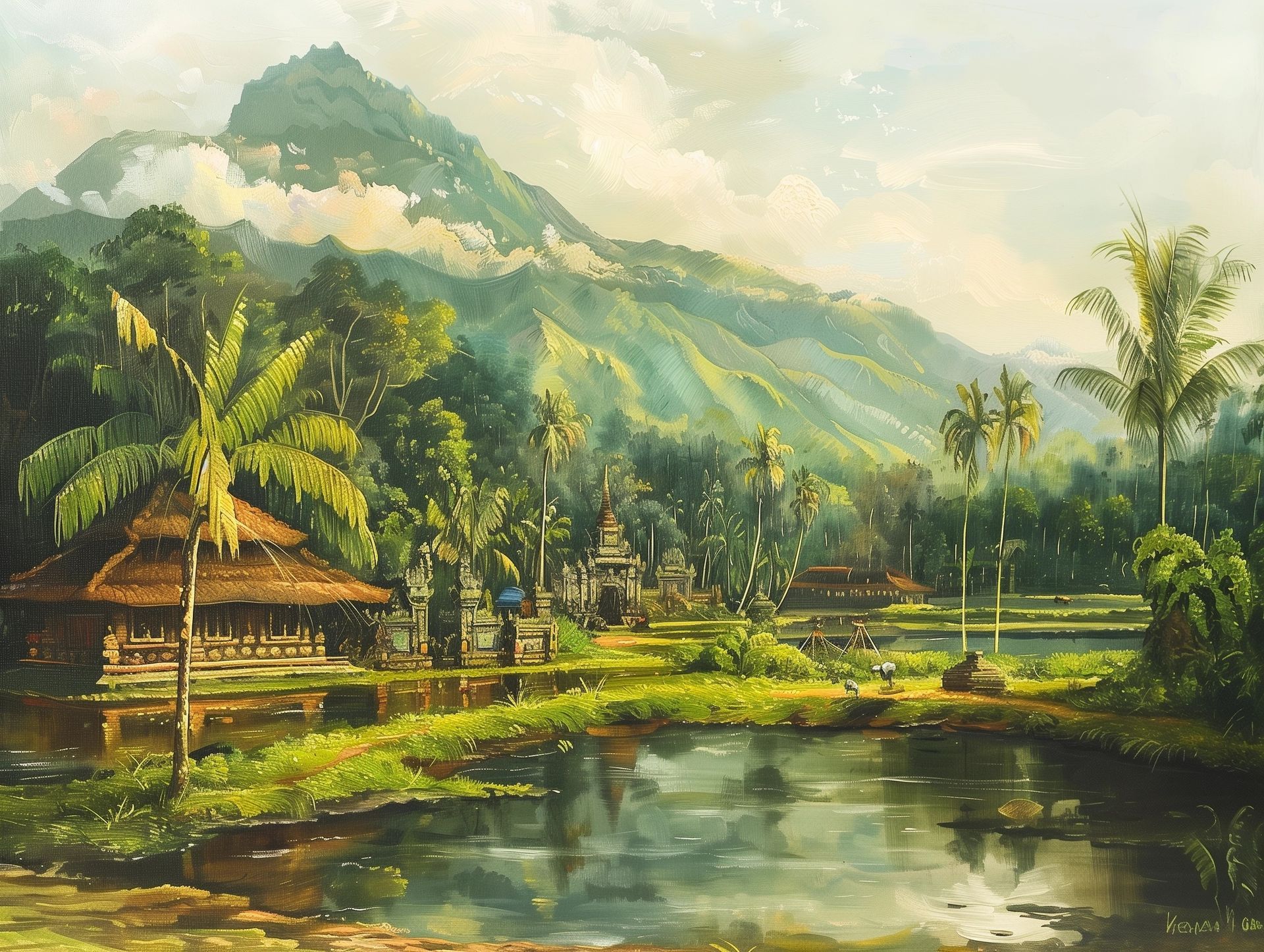Greenlandic Inuit folklore and rare mythical creatures: spirits, legends and ancient Arctic customs
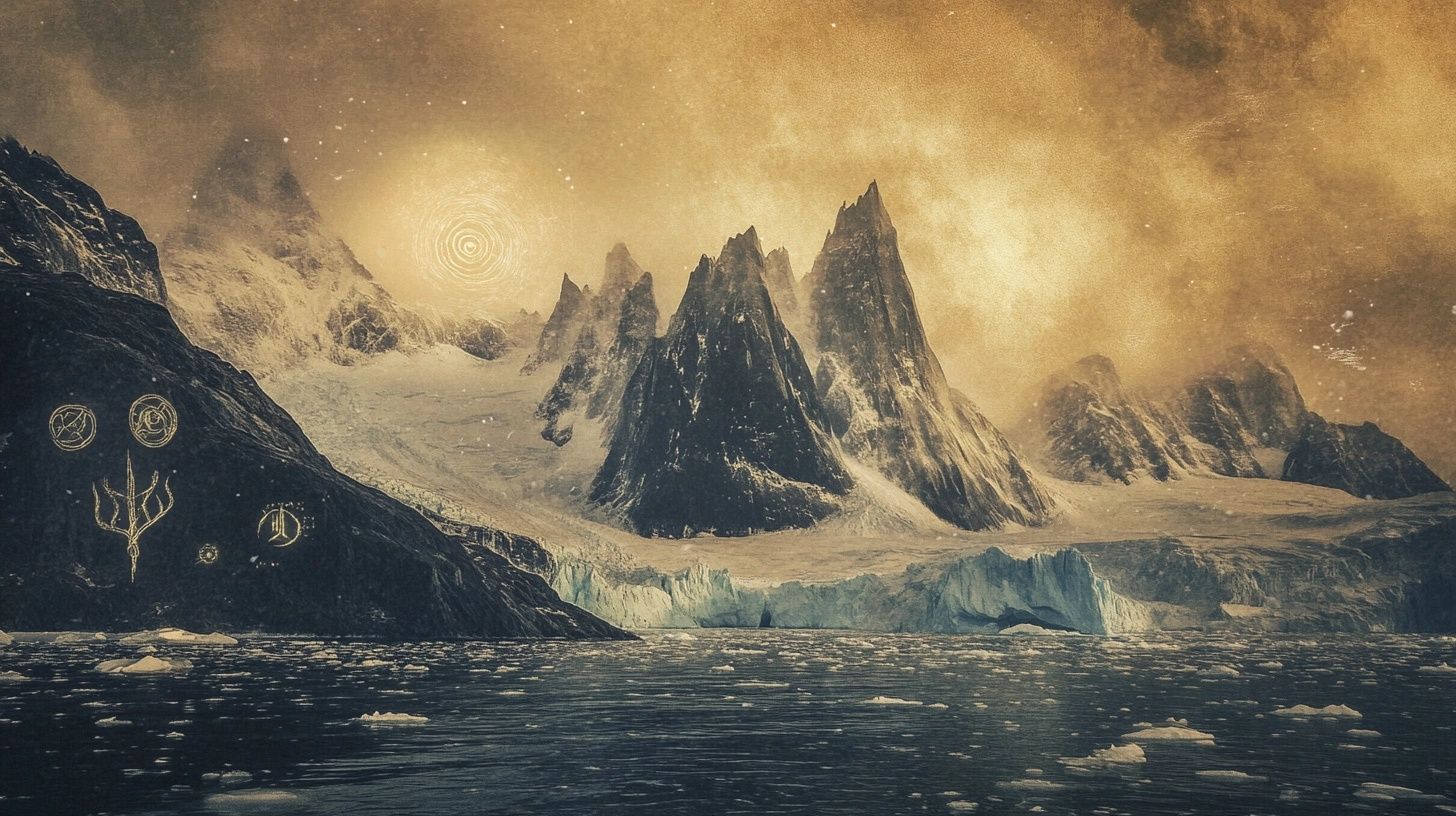
In this article:
Key beliefs and customs in Greenlandic Inuit folklore
Mythical Creatures of Greenland:
- Animal spirits
- Human-like spirits and goddesses
- Giants and dwarves
- Monsters and hybrids
- Celestial and cosmic beings
- Supernatural practices and rituals
- Religious beliefs and social order
Summary of themes: Greenlandic mythology
Did you know that nearly 90% of Greenland's population is Inuit? Quite the contrast to Canada, where only 0.2% identify as such, despite a larger total number.
Inuit communities across the Arctic share wild landscapes and distinctive folklore, yet each region has its own spin on ancient legends and folktales, shaped by different histories and environments.
In this article i'm exploring the lesser-known folklore and mythology of Greenland, with a special focus on mythical creatures (because we all love a good creature story!).
I’ve drawn from sources dating back to the late 19th century along with more recent works. This is intended to be a lively round-up of traditional mythology, not a definitive account of beliefs today.
So, get ready to encounter giants who can read minds, soul-stealing animals and spirits hiding deep beneath the ice. Let’s go...
Published: 16th Jul 2024
Updated: 31st Oct 2024
Author: @Mythfolks
Key beliefs and customs in Greenlandic Inuit Folklore
Based on early accounts, the folklore of Greenlanders (or natively, "Kalaallit") traditionally revolves around a few core ideas that shape their understanding of the natural and supernatural world and their place within it.
The concept of Inua (spirit owners)
In Greenlandic mythology, nearly every place or object is thought to be under the control of an invisible spirit or ruler, each with its own specific area of influence.
These rulers don’t work under a single supreme deity and there isn't a suggestion of an organized hierarchy of spirits or gods.
There’s also little evidence that there was a unified explanation for the origins of the world or life.
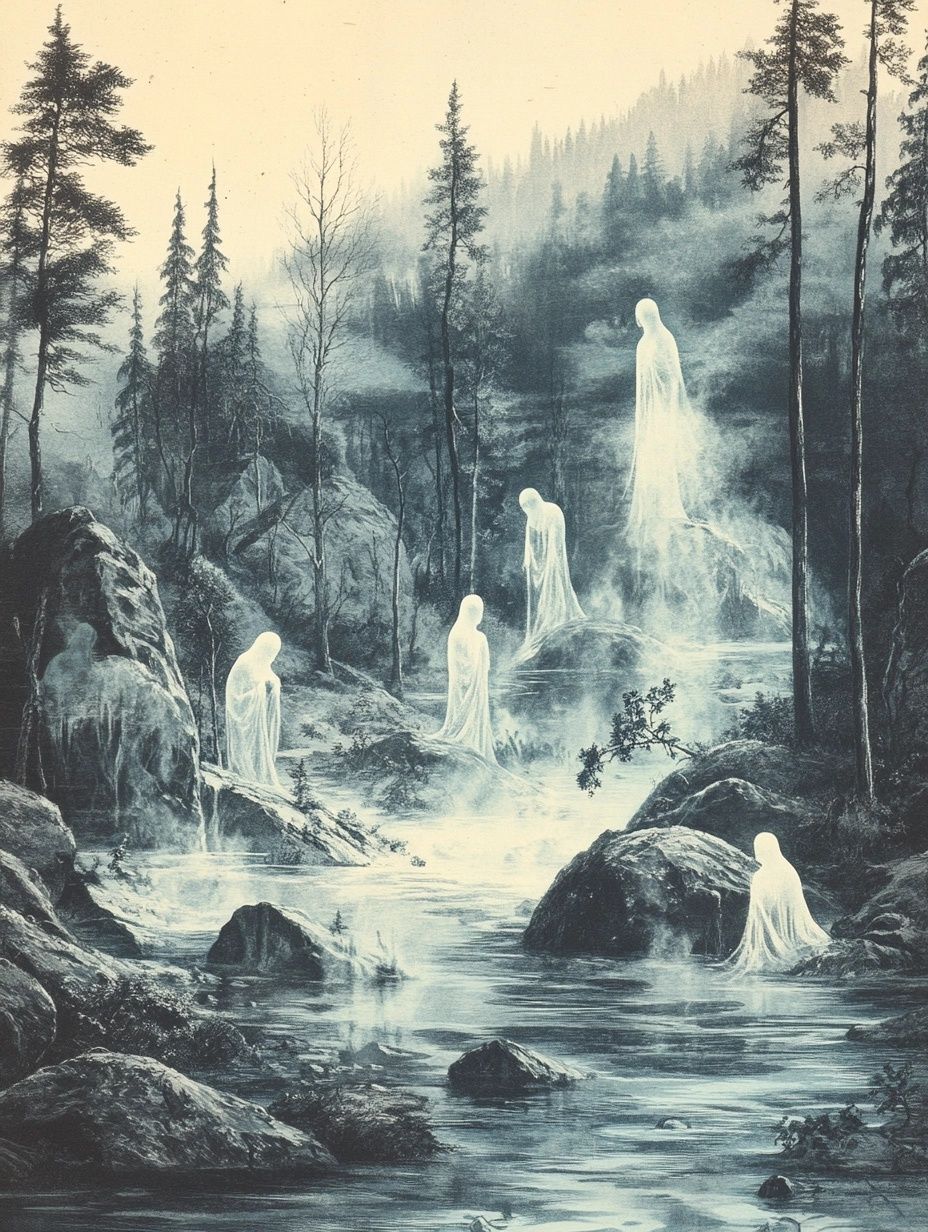
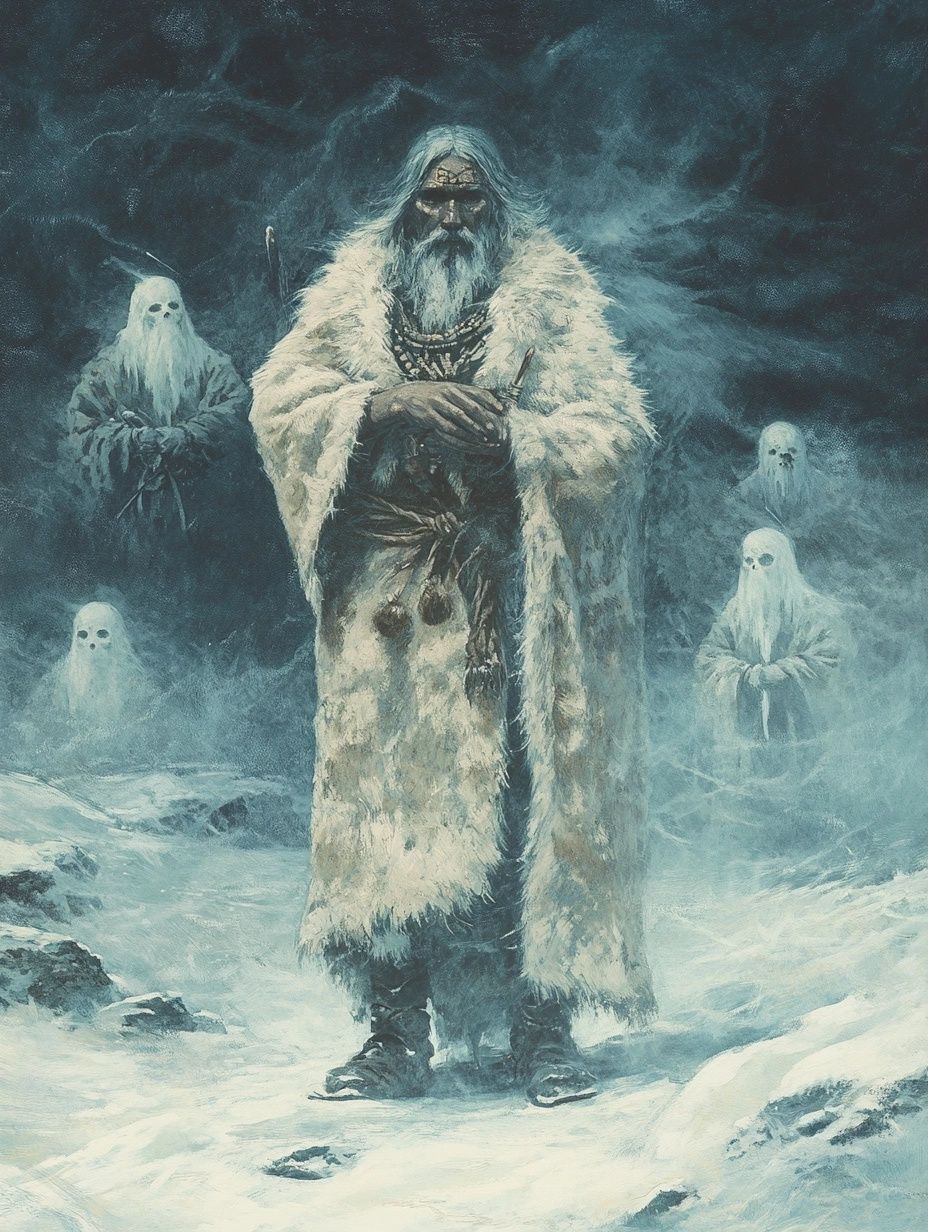
The Angakkoq (shamans)
The Angakkoq (also, Angakok or Angakut), or shamans, are central figures in Greenland's Inuit culture.
They’re the community’s protectors, acting as intermediaries between humans and the spirit world.
They are also responsible for “good magic” v.s the “bad magic” of witches and other beings (more on this further down).
Upperworld and underworld: life after death and the origin of the Northern Lights
According to the early texts, Inuit legend says that the earth is supported by pillars and rests on top of an underworld, which can be reached through entrances in the sea or mountain clefts.
Above the earth is an upper world, beyond the blue sky, which is thought to form a solid outer shell that might even revolve around a high mountain in the far north.
This upper world resembles a real land with mountains, valleys and lakes.
After death, a person’s soul can journey to either the underworld or the upper world.
Unlike the Christian concept of the underworld as “hell,” the Greenlandic underworld is actually seen as the preferable destination - it’s still warm (!) but has plenty of food and other good things.
This is where the “fortunate” souls, known as Arsissut, live, enjoying a life of abundance.
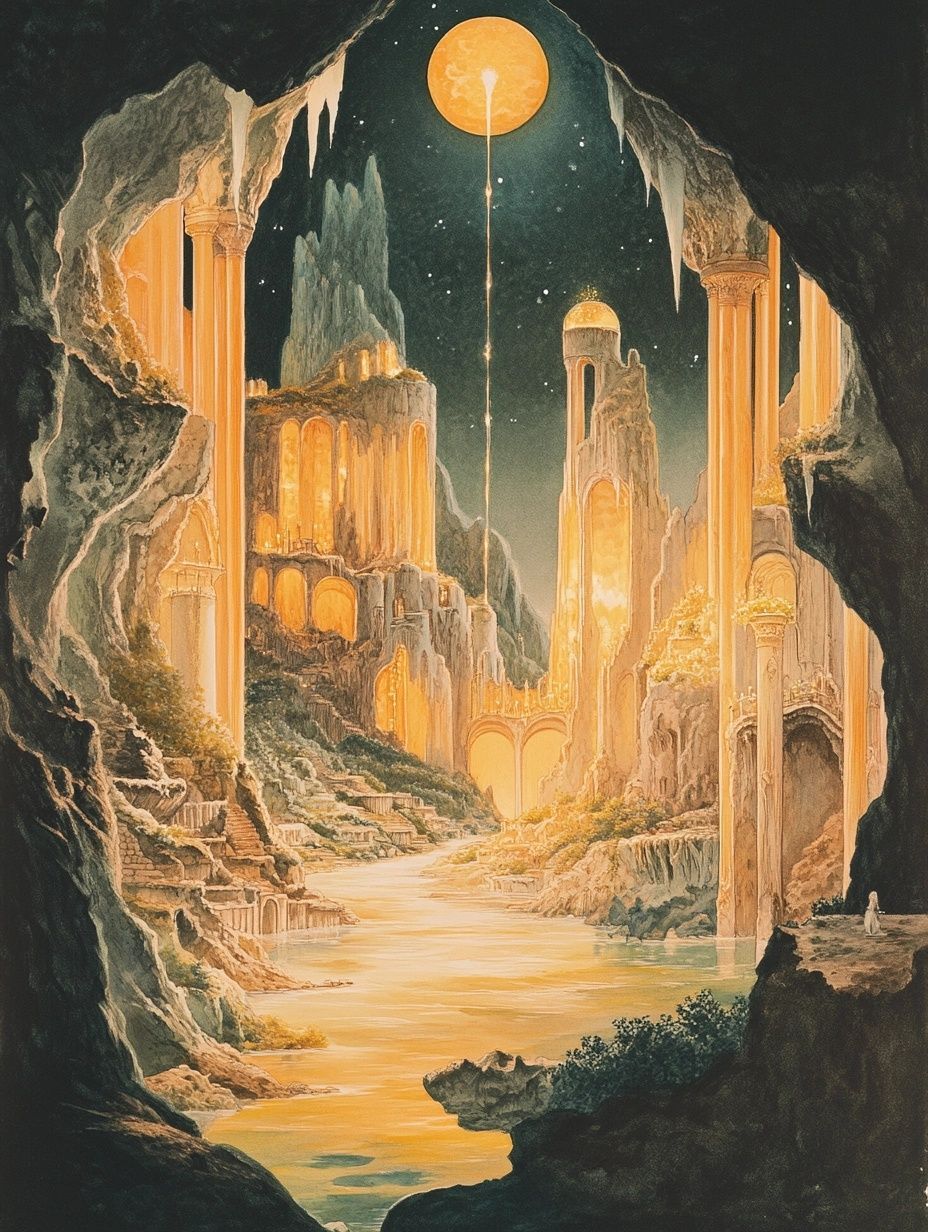
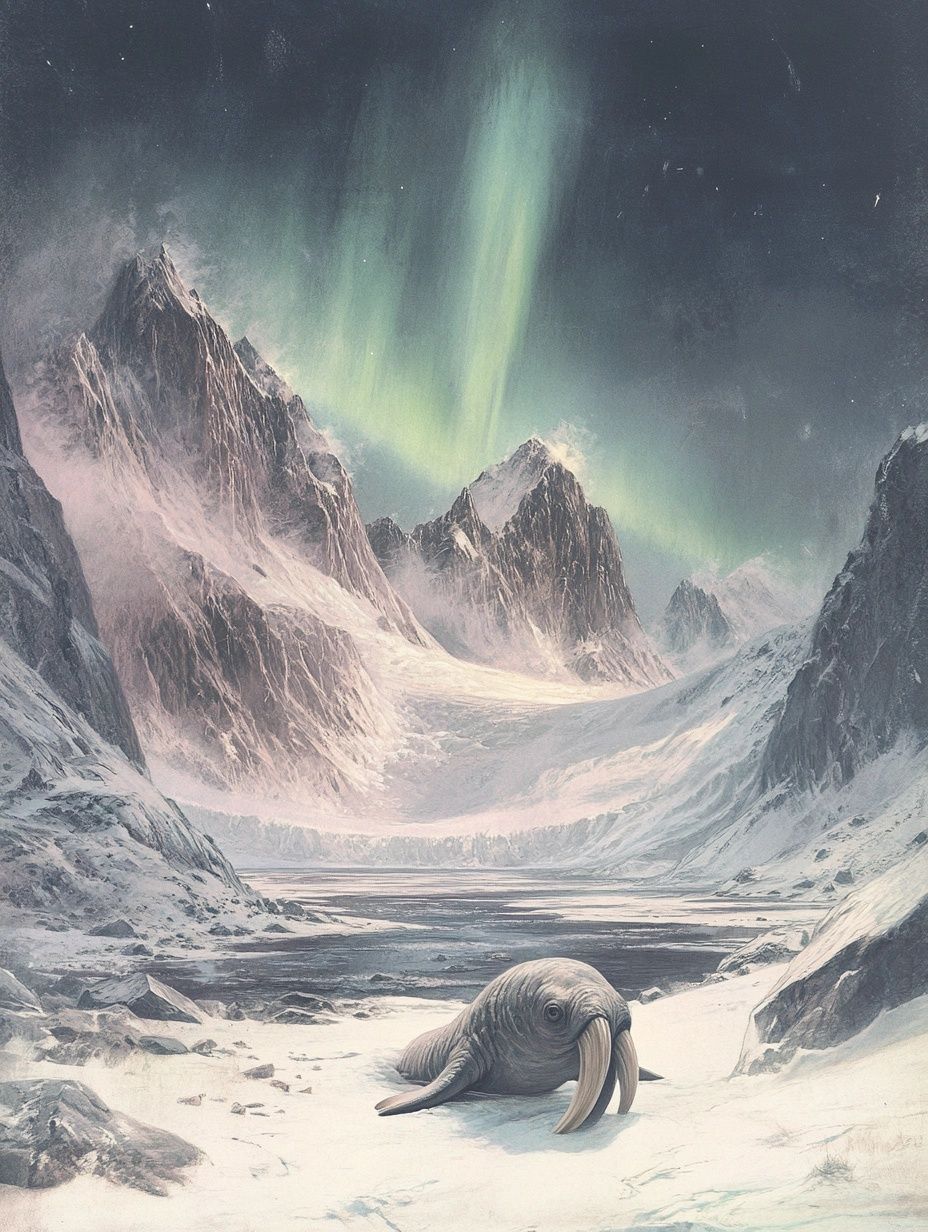
But souls going to the upper world face cold and hunger. They're known as Arssartut, or "ball players," because they're said to play with a walrus head, creating the Aurora Borealis (Northern Lights).
The upper world is also thought of as an extension of the earth, stretching upwards.
Souls temporarily freed from their bodies travel there by air. The way to this world leads up a high mountain, but the path is challenging and often too far or too steep to reach.
Ghosts and the afterlife
Their souls may have gone on their way but death doesn’t mean disappearing in Greenland. Spirits of the dead often linger near their graves or personal belongings and can sometimes become ghosts.
These spirits can bring blessings or cause harm, especially if they died under tragic or violent circumstances.
The living respond by carefully respecting the dead, mindful that a disturbed spirit can disrupt everyday life.
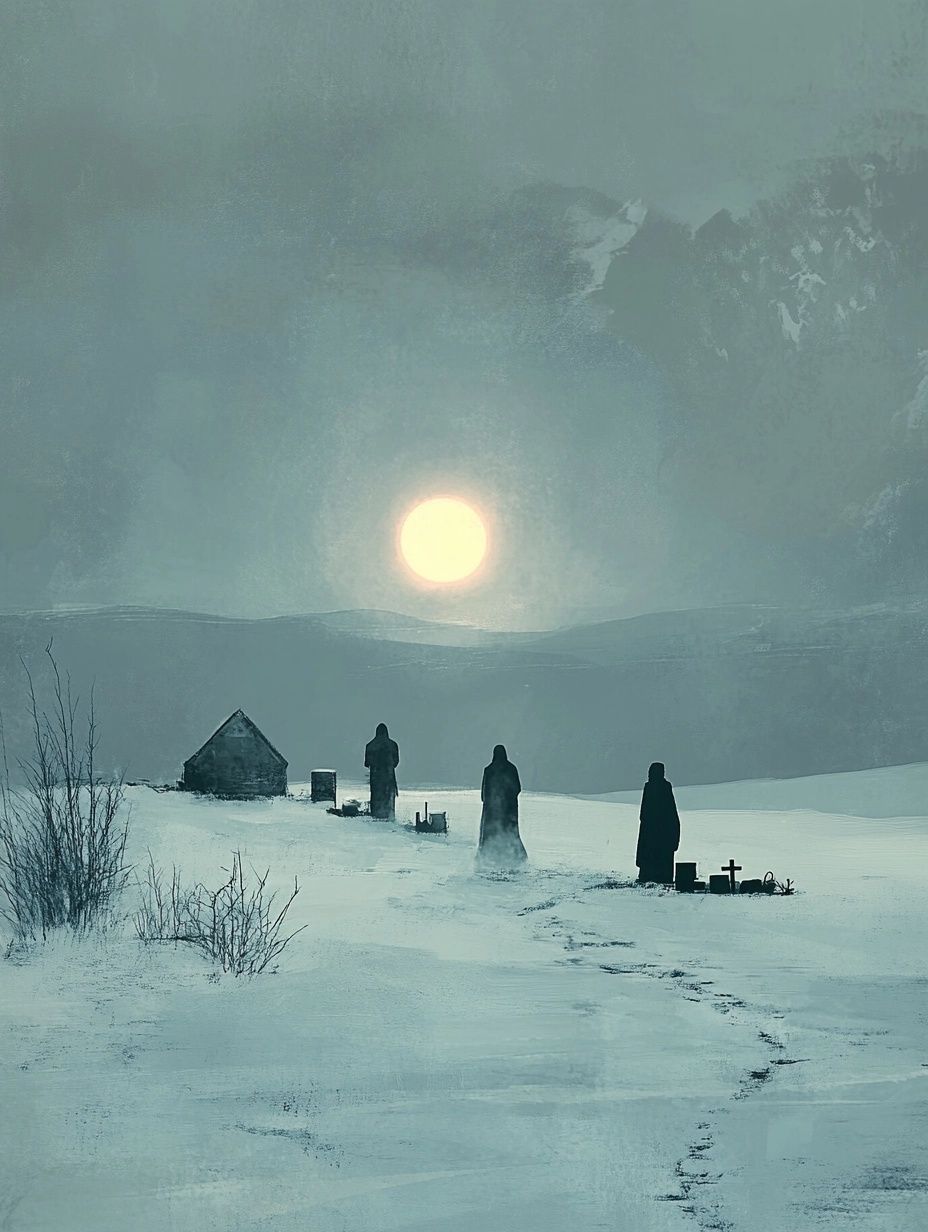

European influence & storytelling tradition
Over time, Greenlandic Inuit culture adapted to the influence of Norse settlers and later Danish missionaries.
Although new customs were introduced, the core beliefs remained. Christianity made its way into Greenland, but Inuit stories, values and a unique cultural identity were kept alive through storytelling.
Ancient tales (Oqalugtuat) pass down legendary figures and moral lessons, while more recent tales (Oqalualaartut) capture local events and family histories.
Mythical creatures of Greenland
Most cultures have a good variety of mythical creatures - but Greenland is really competing for one of the most prolific!
I read hundreds of stories that featured different creatures and have picked out a selection that gives the casual reader a good general overview, as well as bringing to light many beings that are barely in existence in the public realm (as is the goal of Mythfolks!).
1. Animal spirits
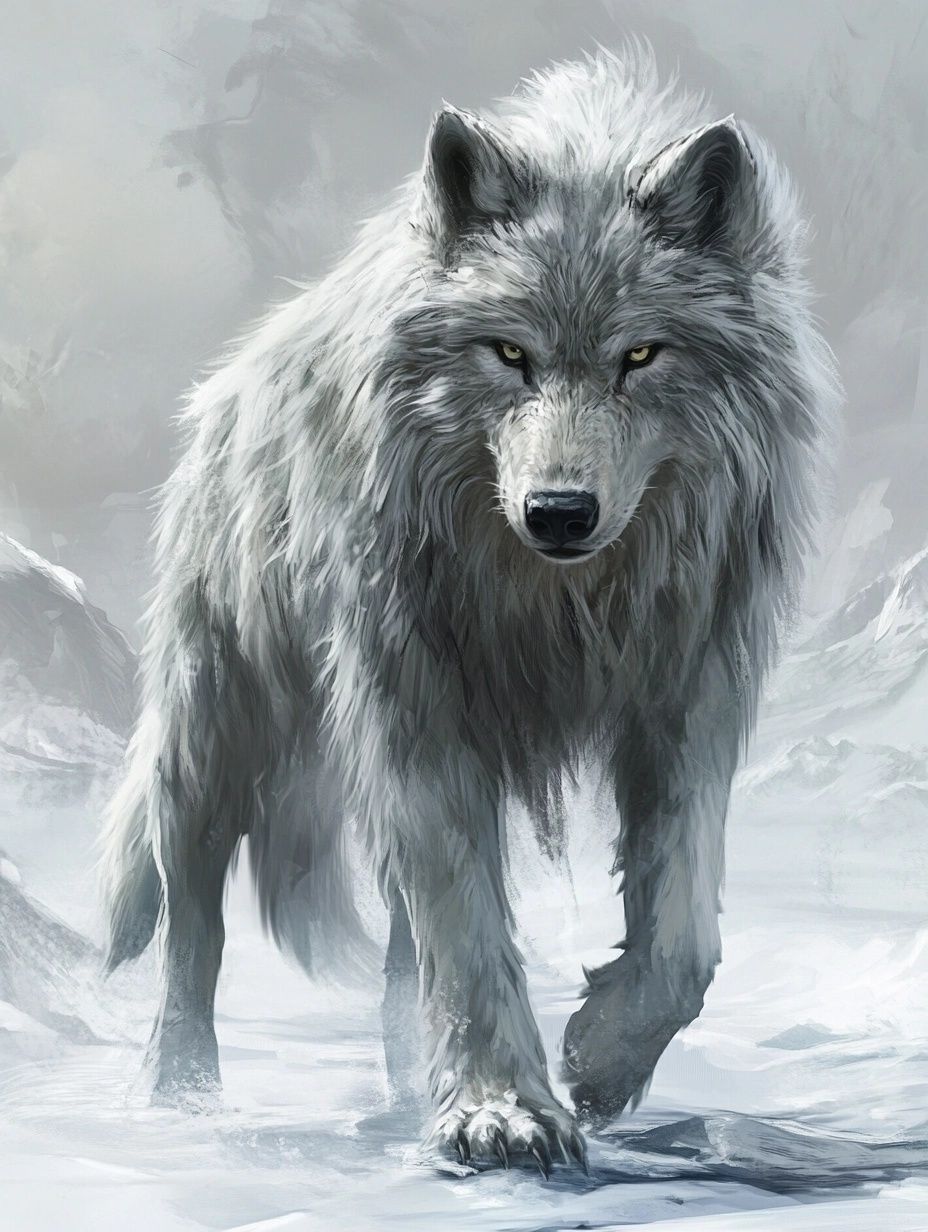
Amarok - lone wolf spirit
The Amarok (also Amaroq) that features in many folktales from Greenland like this one about Kagsagsuk, is a giant wolf known to roam the wilderness alone and punish those who disturb the natural balance.
Unlike regular wolves that travel in packs, the Amarok is solitary, showing up when someone seeks out danger or acts recklessly.
One story tells of a grieving man who, in his sorrow, went searching for an Amarok to distract himself. When he and his companion found the Amarok’s young, he killed them, to draw out the adult.
His terrified companion urged him to hide and they watched as the Amarok returned, holding a reindeer in its jaws.
Realizing its young were dead, the Amarok pulled something human-like from the lake. At that moment, the man fell lifeless - the Amarok had found him and taken his soul as punishment.
Umiariarsat - supernatural seals
In Inuit stories, animals are sometimes shown speaking or appearing in human form, but this isn’t just seen as a fable.
Animals are believed to have the power to take on supernatural forms, appearing as ghosts or other spirit-like beings.
They’re considered to have their own Inua spirit and can seek revenge if they're harmed.
One example is the Umiariarsat (plural of Umiariaq), a supernatural version of a women’s boat, or Umiak, where the rowers are actually seals transformed into human form.
2. Human-like spirits & goddesses
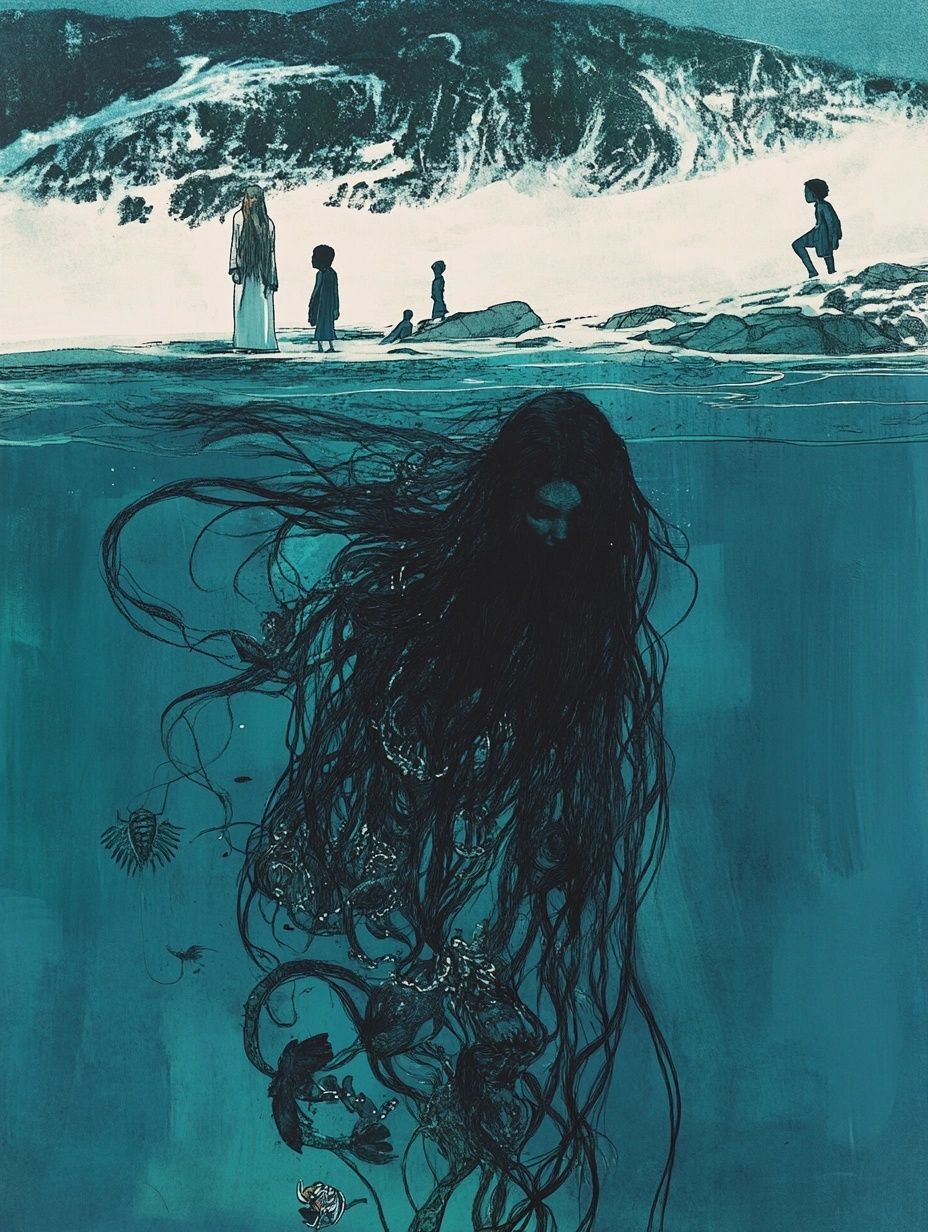
Sassuma Aarna (also Sedna and various others)
Possibly one of the most famous mythical creatures for the locals is Sassuma Aarna or the "Old Woman”, or “Lady Down Under”, who is central to Inuit creation myths (where they exist) across Greenland, Canada and Alaska.
She’s known by many names, including Sedna, Nuliajuk and Takannaaluk and is a goddess believed to live at the bottom of the sea, controlling the supply of sea creatures that Inuit communities depend on for survival.
In many versions of the tale, the Old Woman began as an ordinary girl.
One account says she fled from her bird-husband* in her father’s boat, clinging to the side as her father cut off her fingers as punishment for running away.
As each finger fell into the water, it transformed into whales, walruses and seals.
The Old Woman sank to the ocean’s depths, becoming the goddess of all sea creatures, protecting them from human greed and misuse.
Today, she remains a powerful figure, with only the most skilled shamans believed to reach her in times of need.
Her influence endures in Greenlandic Inuit art and culture, where she's often depicted with marine imagery and is seen as a symbol of resilience and admiration for the ocean.
*At least one version has a less savoury explanation for her running away!
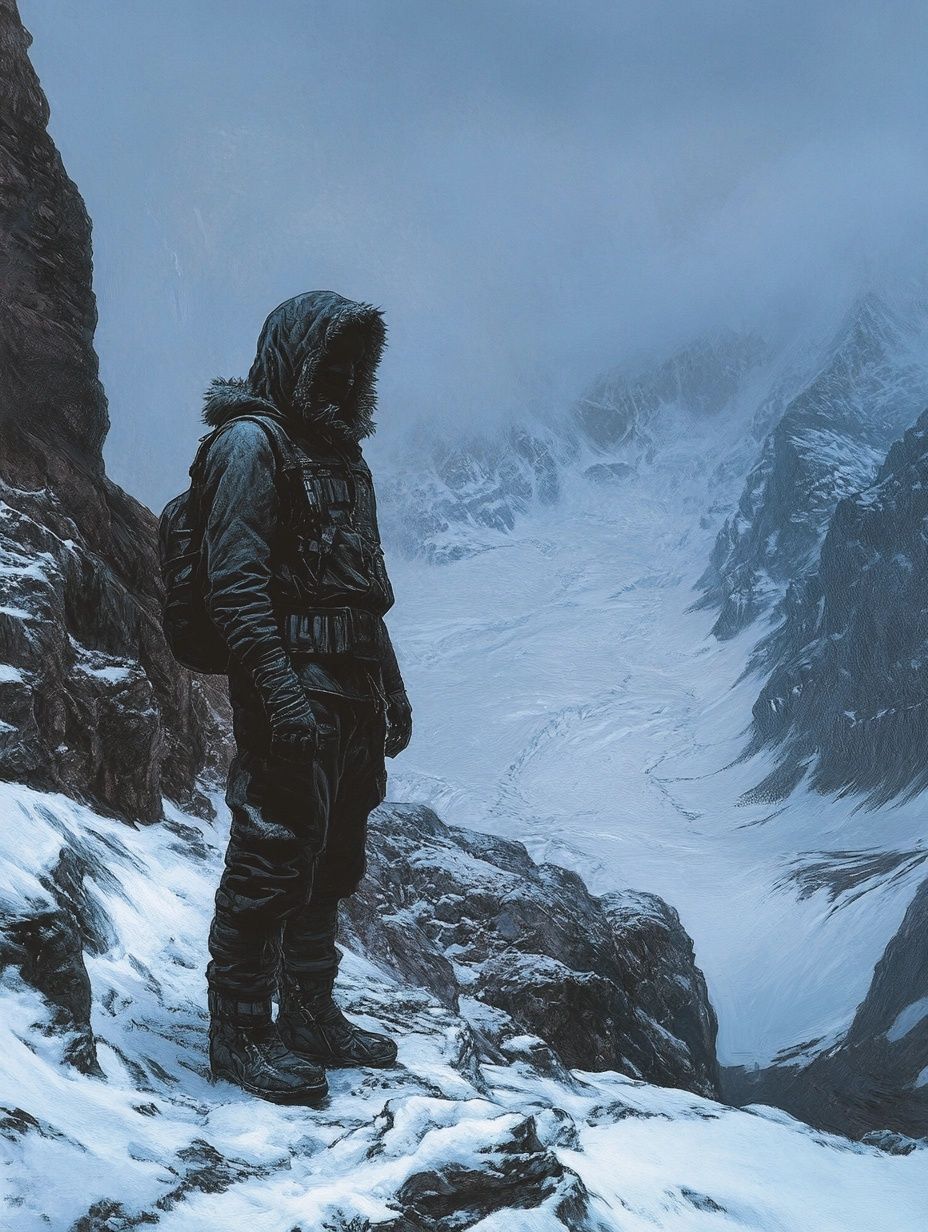
Qivittoq (also, Kivigtok in Greenland) - the outcast spirit
A Qivittoq is the spirit of a person who, after suffering mistreatment or constant put downs by their families or community, chooses to leave society and live alone in the wilderness.
These outcasts are said to develop extraordinary strength and speed and to gain a deep connection with nature.
Over time, a Qivittoq learns the secrets of the wild and can even understand animal speech.
It’s also believed that those who wronged the Qivittoq could eventually suffer revenge, as these outcasts are thought to carry unique powers that grow with their isolation.
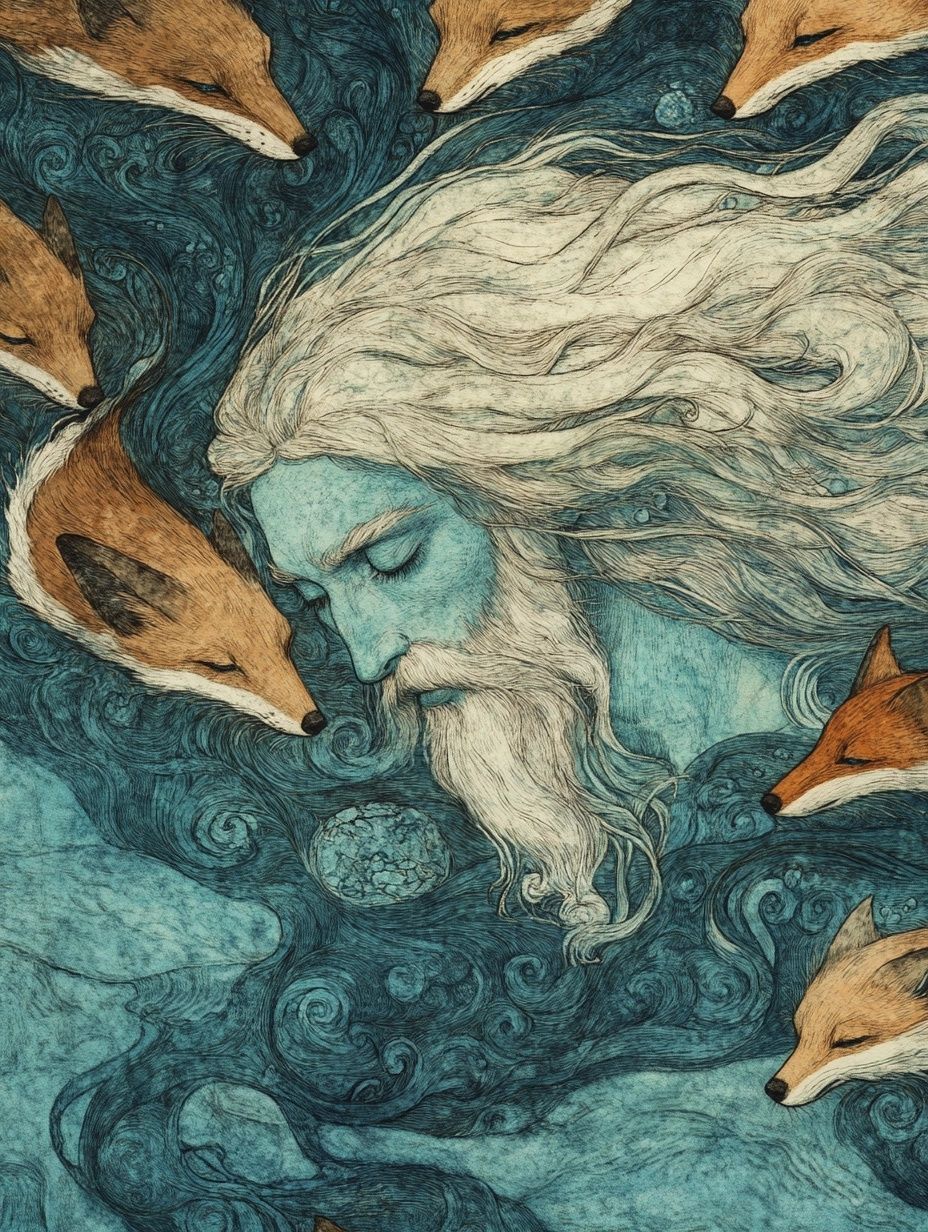
Hungusuitarsiat - mermen sea spirits
The Hungusuitarsiat, or mermen, are sea spirits who have a fascination with fox-fur.
Fishermen and hunters leave fox tails as offerings to win their favor for safe travels and good hunting.
They’re also known to be enemies of children who misbehave or defy their parents, appearing to scare them into obedience.
Hungusuitarsiat remind people that the ocean isn't just a physical boundary but a place full of spirits that demand respect.
Ingnera - fire spirits
The Ingnera are supernatural fire spirits that live underground, often near the seashore. They’re divided into two types: the upper and lower Ingnera.
The upper Ingnera, called Mersugkat or Kudlit, are friendly spirits with pale skin, red eyes and small noses. Known to help lost kayakers, they live in refined homes and only appear to those with special sight.
The lower Ingnera, or Atdlit, are far more dangerous. They have no noses and are known to torment skilled kayakers, sometimes dragging them underwater to imprison them.
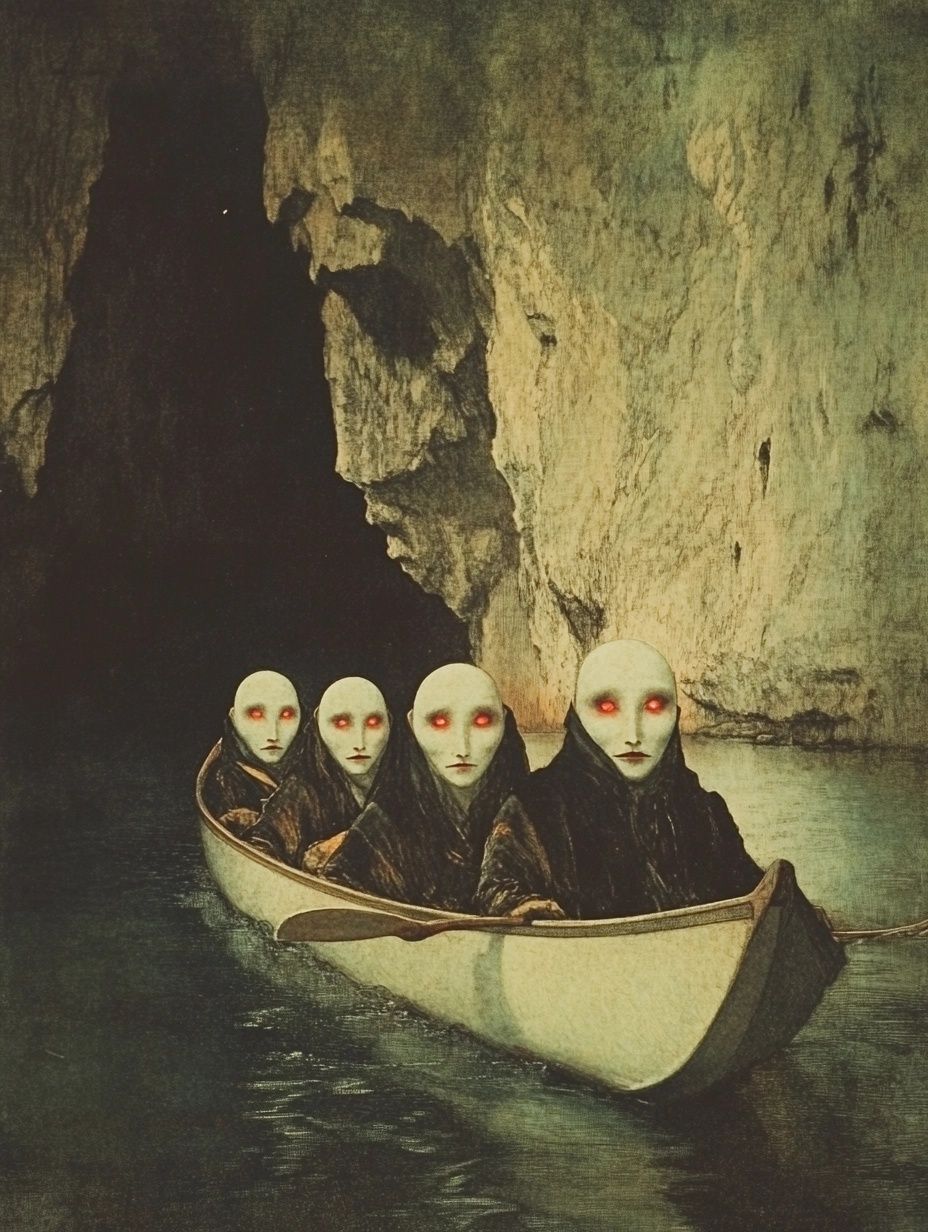
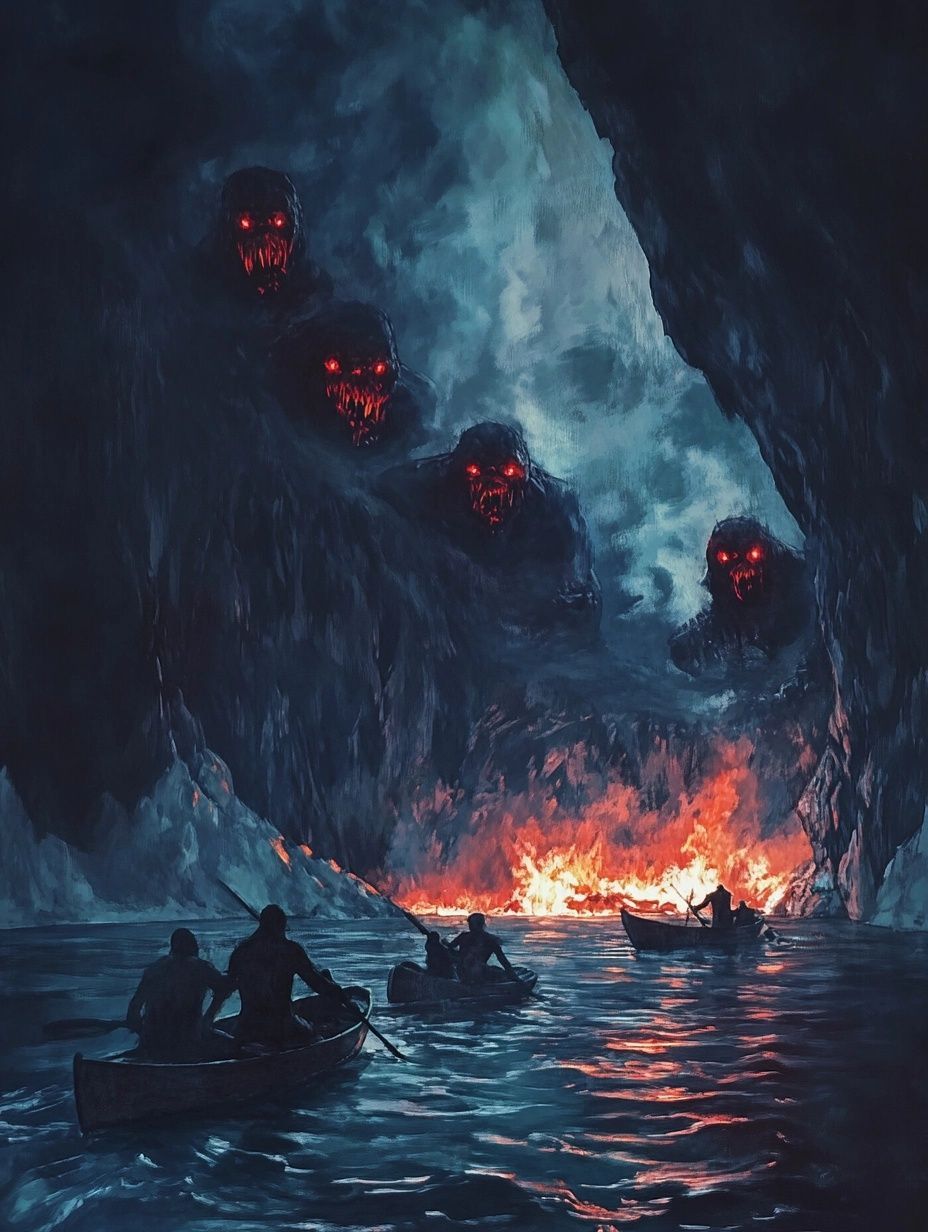
Honorable mention:
Isserkat (island spirits)
There wasn’t much detail on these but they deserve a mention - the Isserkat are strange spirits who live on isolated islands. They look mostly human but have one odd feature - they blink sideways instead of up and down.
There was some crossover in that description with the story of the Ijirait, who were described, physically, similarly.
However, the Ijirait are described as mountain dwellers and I believe they are related more closely to the legends of the Labrador Inuit of Canada - I welcome clarifications, say hello@mythfolks.com if you’re able to help!
3. Giants and dwarves
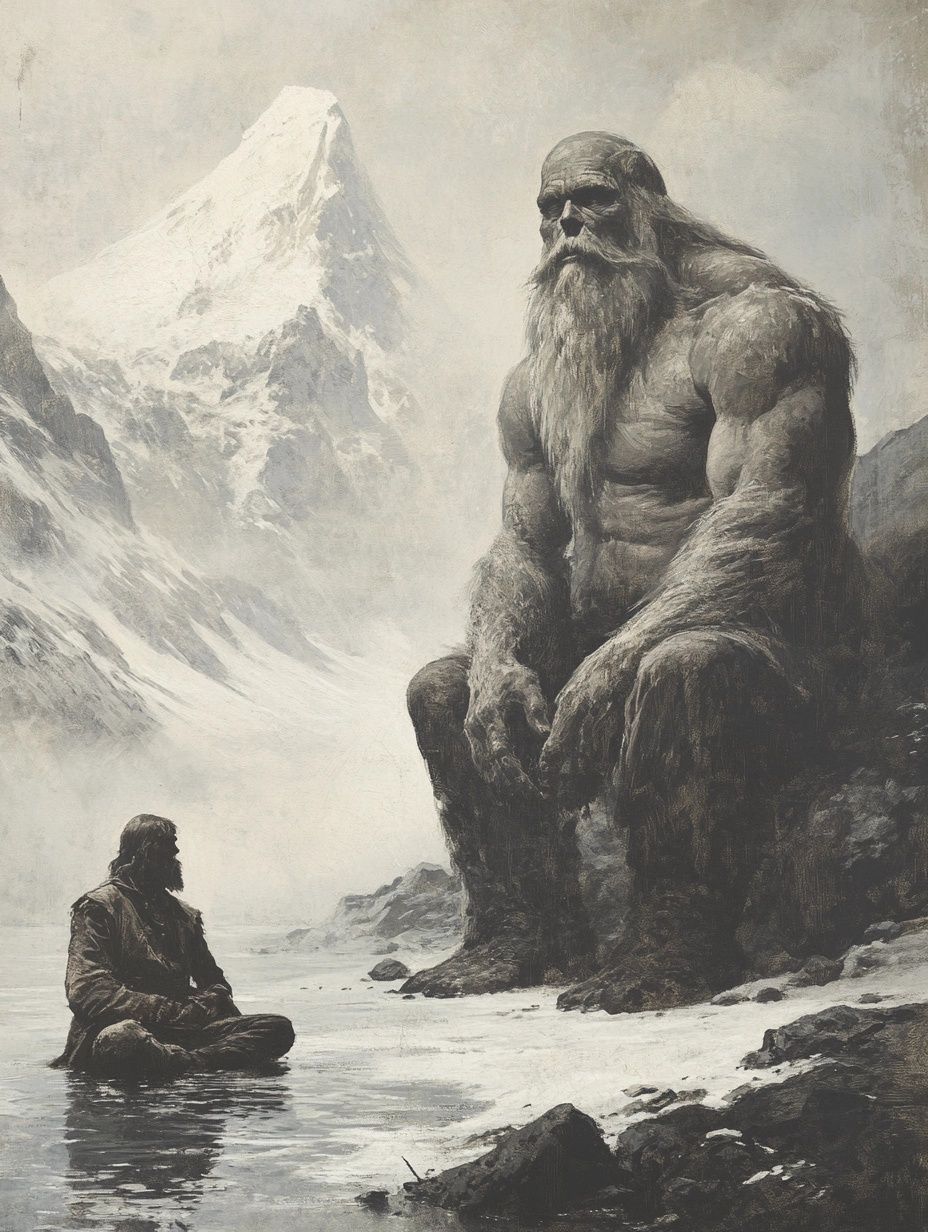
Tornit - inland giants
The Tornit are also technically spirits but fall under the giant, mysterious being category. They’re supposed to live deep in the inland regions, hidden from human sight.
They’re more than twice the size of an average human and are known for their deep wisdom and psychic abilities - they can sense human thoughts before they’re spoken.
Unlike regular hunters, the Tornit don’t use kayaks; they sit directly on the water’s surface while hunting and they're said to only appear in foggy weather.

Inuartutligkat - dwarves
The Inuartutligkat are fierce dwarves with a deadly superpower - they can kill any creature by simply pointing at it.
These dwarves are small but powerful, proving that size has little to do with strength in Greenlandic lore.
Their skill with weapons makes them one of the most dangerous beings to encounter.
Honorable mention to the "Narrayout": few details available but were referred to as "big-bellies," due to their distinctively large stomachs. .
4. Monsters and hybrids
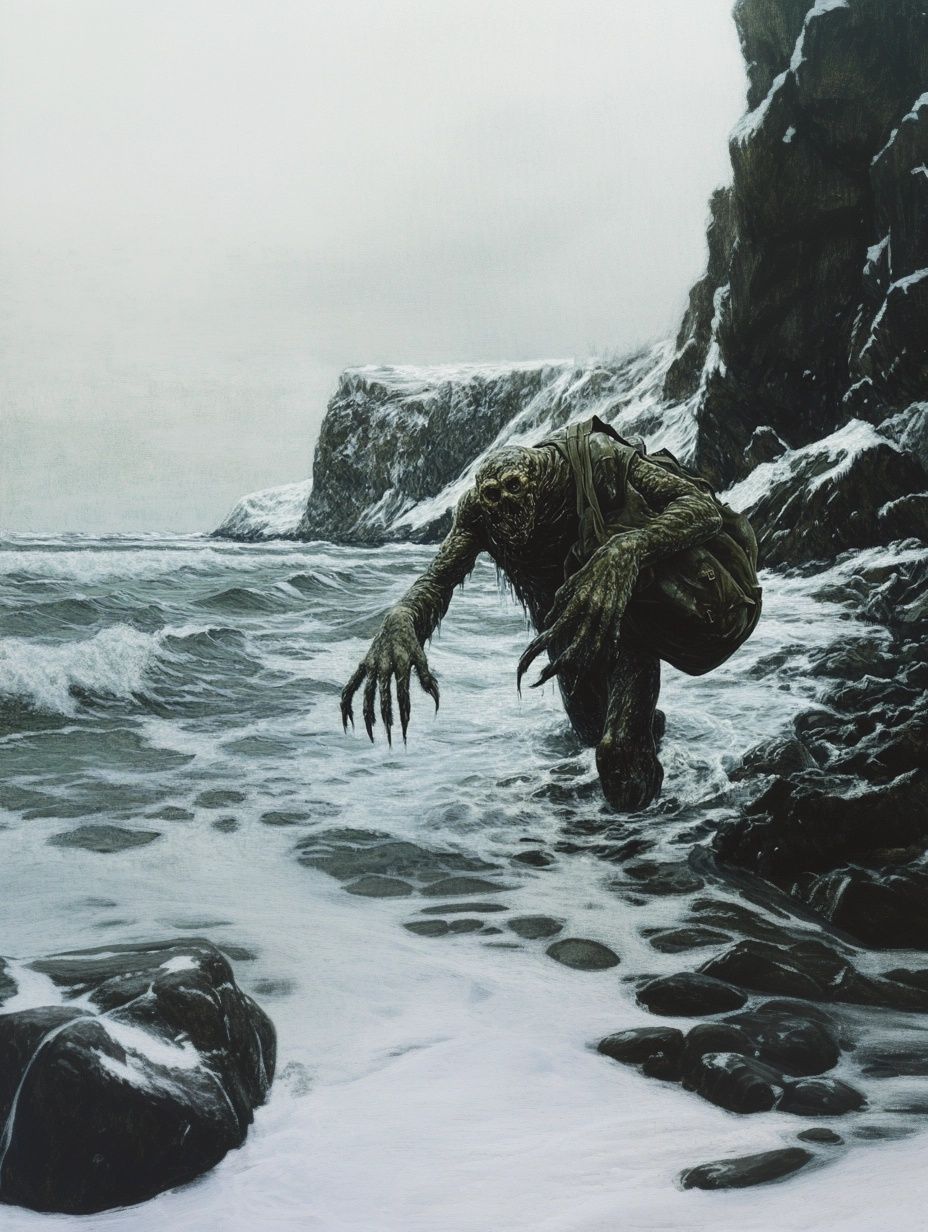
Qalupalik - the child-snatcher of the sea
The Inuit legend of the Qalupalik (also Qallupilluit) tells of a creature that lives in the cold, murky waters of the Arctic.
It's often described as a twisted, human-like being with scaly, bumpy skin, similar to a fish and it supposedly reeks of sulfur. It's also often depicted wearing clothing made of eider duck feathers, complete with a large pouch on its back.
According to legend, the Qalupalik lurks just below the water's surface, waiting for children who stray too close to the shoreline.
It’s believed that this creature uses its webbed fingers to silently pull unsuspecting children into the depths, storing them in its pouch as it retreats beneath the icy waters.
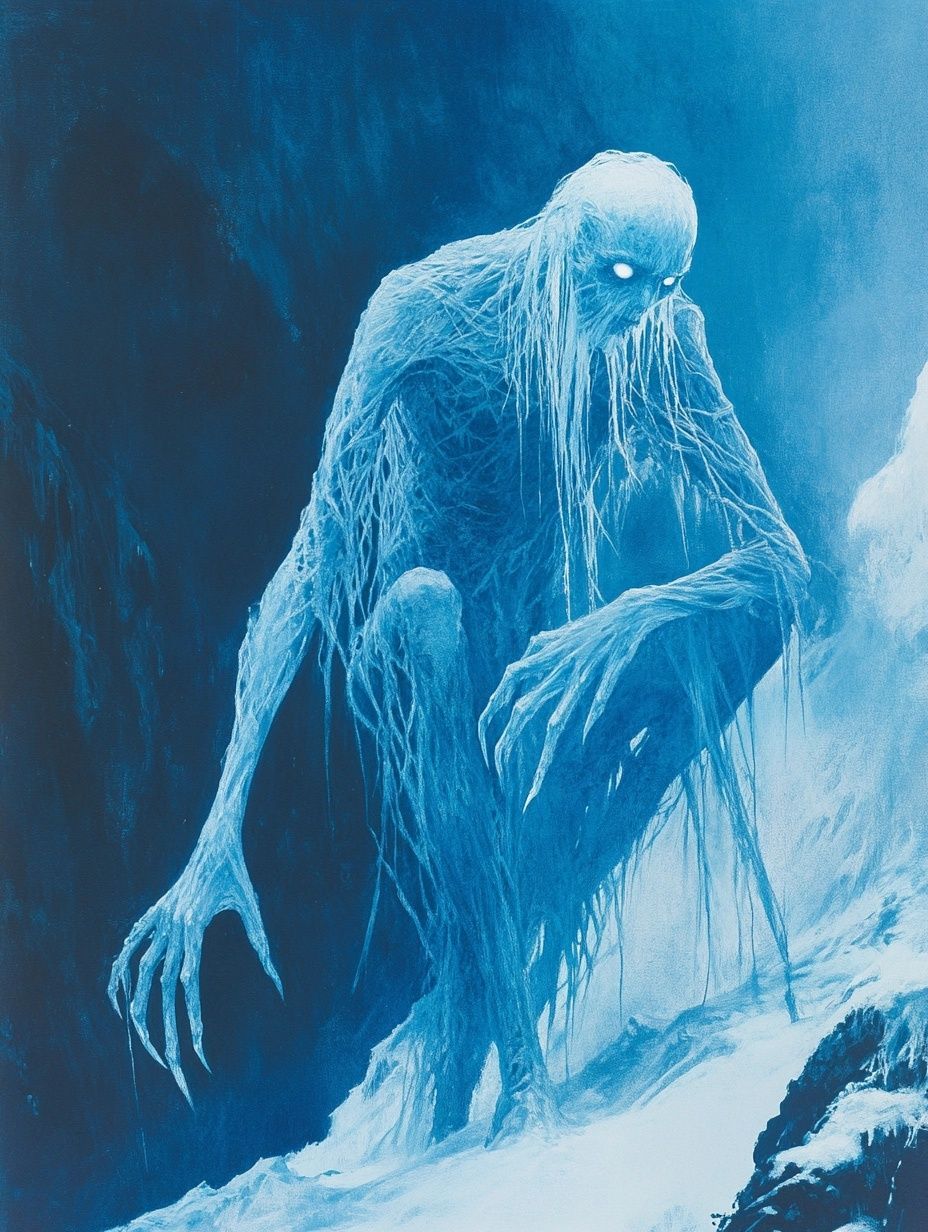
Mahaha - the tickling demon
Mahaha is one of the few truly demonic figures in Greenlandic lore and is described as a thin, sinewy figure with ice-blue skin and piercing white eyes that shine through long, stringy hair.
Mahaha delights in sneaking up on his victims, using his long, sharp nails to tickle them until they can no longer breathe.
His creepy, high-pitched laughter is often the only warning before he strikes and his victims are left with twisted smiles on their faces.
However, stories of Mahaha also say that he can be easily tricked; in some tales, he’s outwitted and sent into a water hole, where he’s swept away by the current.
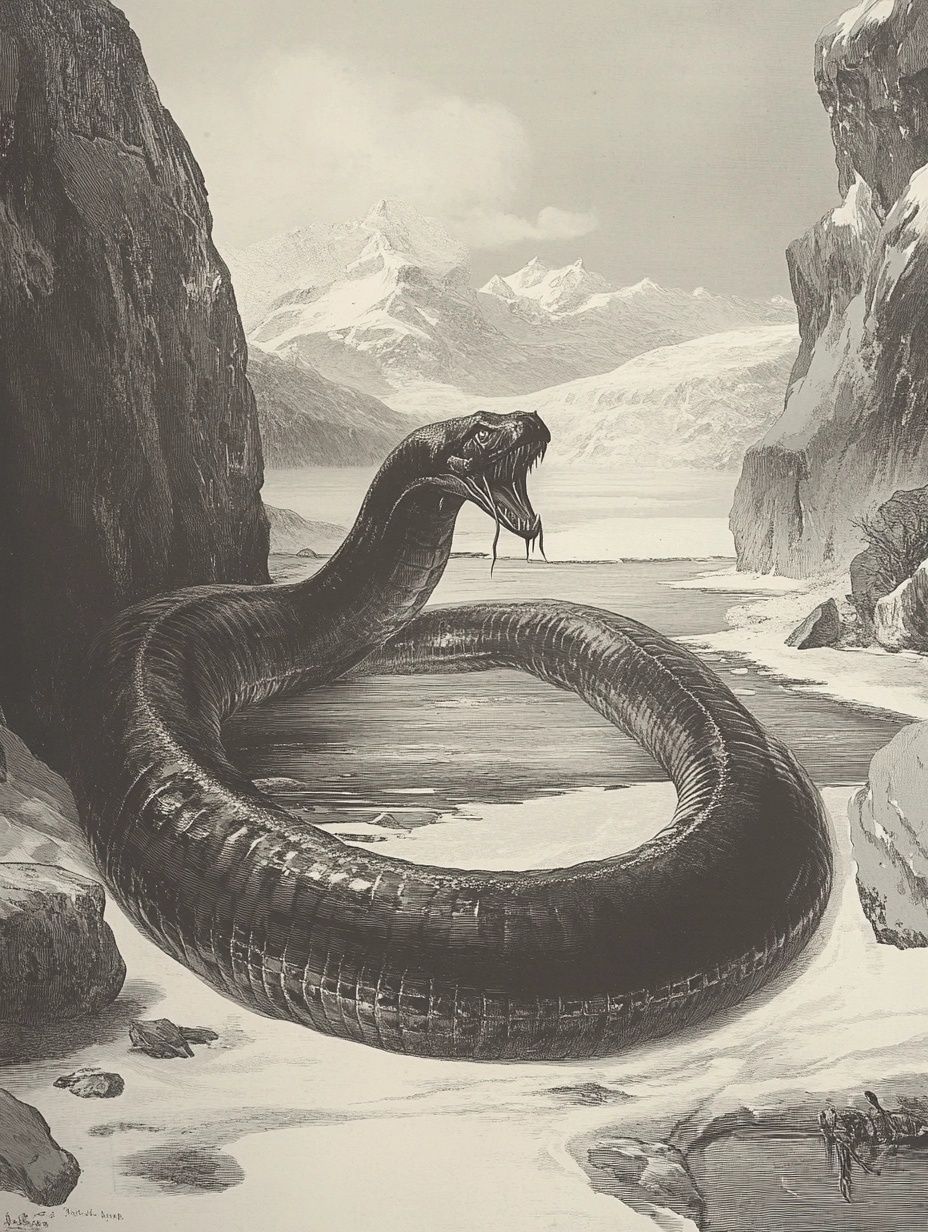
Aasik (also, Argshik)
The Aassik is a giant worm known to lurk near dog pens, where it feeds on puppies. But it can be tamed and used as an animal. Its meat is supposedly delicious and mostly pure blubber.
Occasionally, the Aassik takes on human features, and some legends even say they’ve married humans and had children. These descendants are believed to be butterfly caterpillars with mask-like faces.
And while this all sounds like pure myth, just this year there was the discovery of ancient, giant worm burrows in Northern Greenland, so maybe creatures like the Aassik aren’t so far from reality!
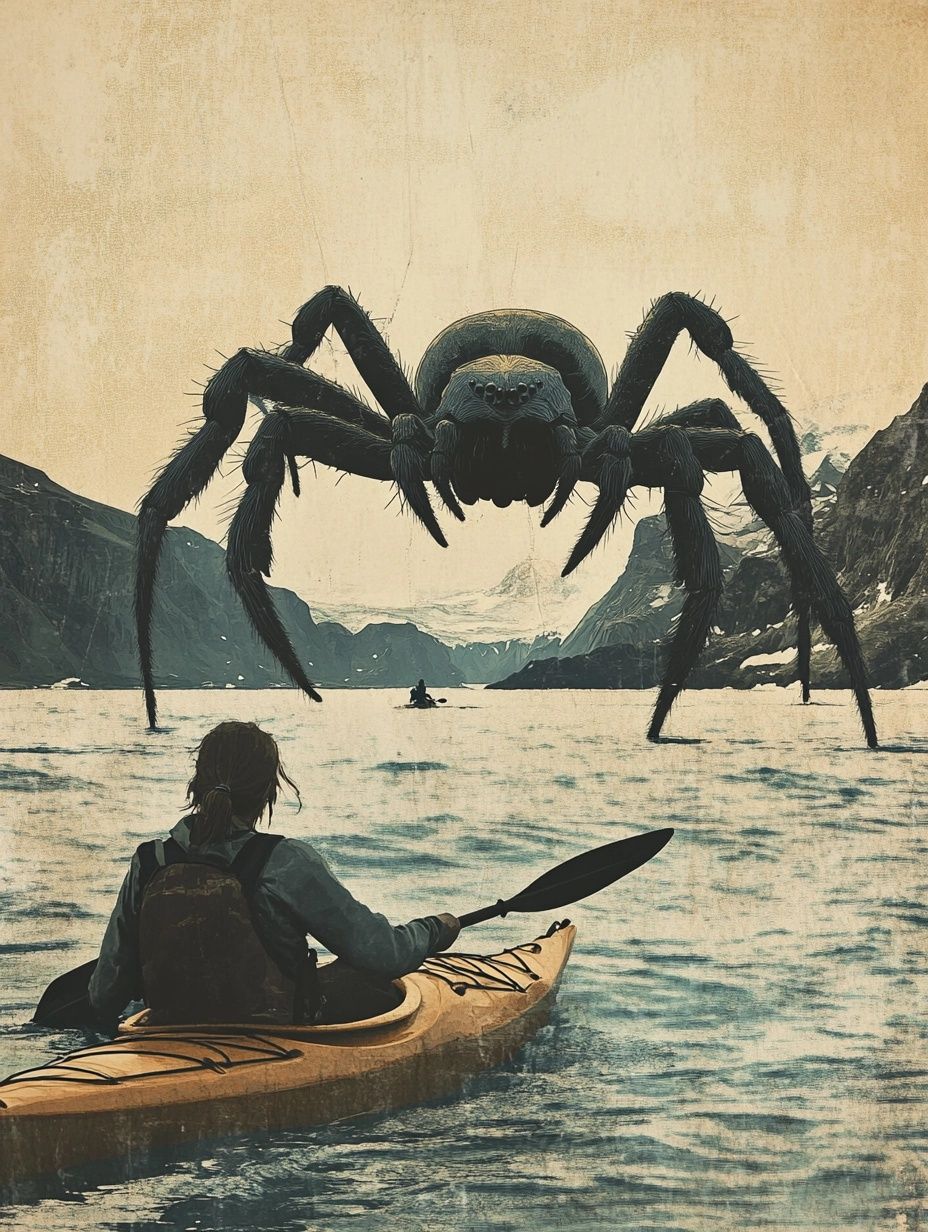
The Ocean Spider
The story goes that a kayaker paddling around Godthaab thought he was in safe waters, but he suddenly noticed the sea bottom much closer than expected.
That’s when he remembered tales from the elders about the “ocean spider” - a creature no kayaker wanted to meet. Moments later, he spotted a huge eye staring at him, followed by another one a paddle-length away.
Realizing what he’d stumbled upon, he tore himself away from the spot, narrowly escaping. Luckily, his kayaking skills saved him, but a less experienced kayaker would’ve been lunch...
The Adlet (or Erqigdlet)
These are half-dog, half-human creatures with the lower body of a dog and the upper body of a person.
Known for their ferocity and speed, they don’t hold back when they encounter human visitors - each meeting usually ends in a brutal fight, but with the Adlet typically losing.
Monster-foxes, hares and birds
In Greenlandic tales, even familiar animals like foxes, hares and birds can take on monstrous forms.
A regular fox, for example, might transform into a "monster-fox" that lures travelers deeper into the wilderness, leading them astray.
These transformed animals are believed to test people who wander too far from safe paths or forget to show respect for the land.
Honorable mentions (not enough details available):
Kiliopak (also known as Kukioras, Kuklopagar and Atalik): is an unusual animal with six or even ten feet, giving it a bizarre and fearsome appearance. I imagined this as another sort of large worm but with legs!
Ice-covered bears: a number of stories reference supernatural monster bears, coated in ice.
5. Celestial and cosmic beings
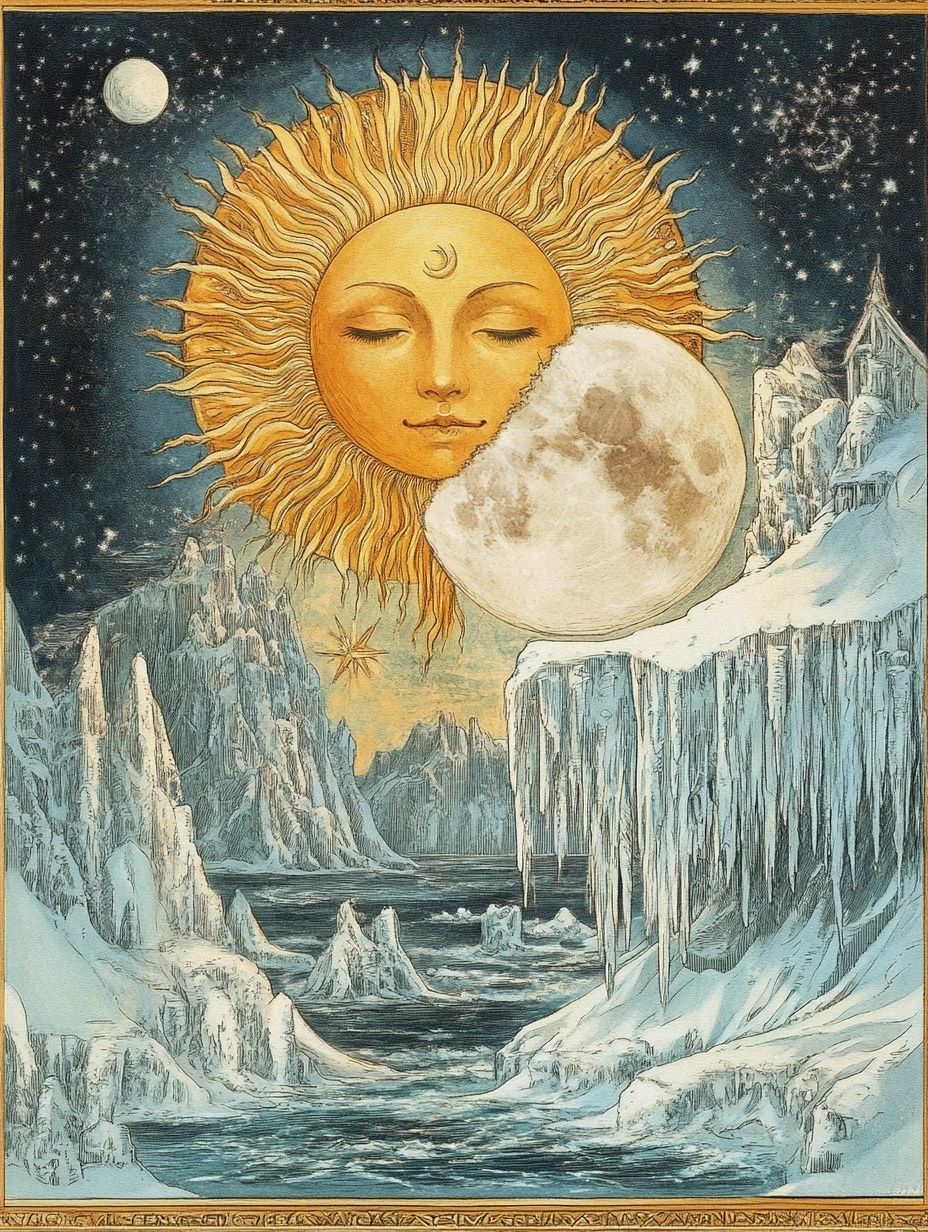
Aningaut and Malina - the Sun and Moon
In this legend, the Moon (Aningaut) and his sister the Sun (Malina) are locked in an eternal chase across the sky.
One night, the Moon marked the Sun with soot, leaving dark spots on her face. Furious, she escaped into the sky, shining brighter than him, while he continues to chase her.
When the Moon isn’t visible, he’s said to be down on earth hunting seals, his old habit from life below (more moon folklore here).
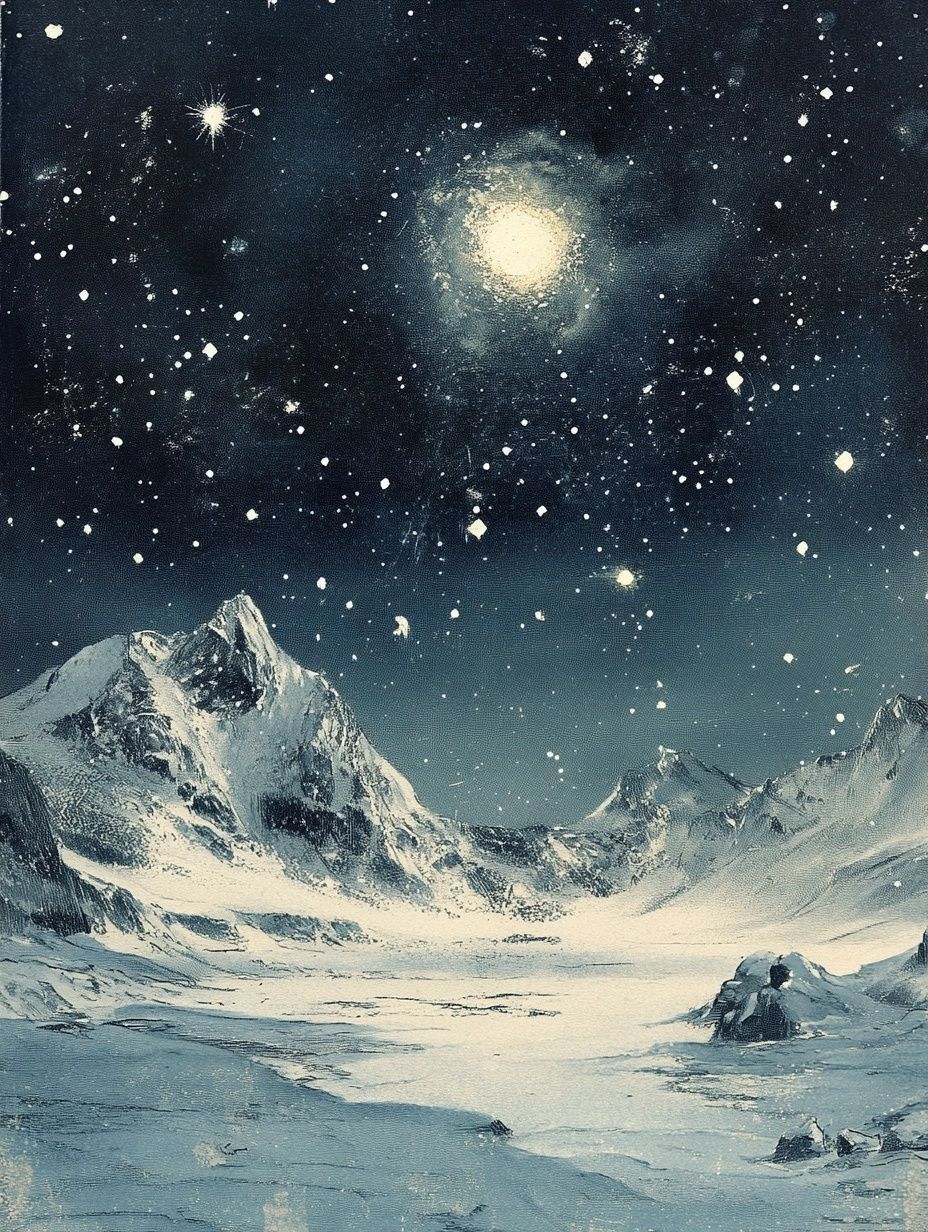
Siagtut - Orion’s Belt stars
The Siagtut represent the stars in Orion’s Belt, said to be hunters lost on the ice. These stars are a symbol of the struggle and connection between humans and the cosmos. They serve as a constant reminder in the night sky of the challenges faced by hunters, who depend on the stars for direction and guidance.
Erdlaveersissok - the entrail-seizer
Erdlaveersissok is a terrifying figure who lives on the path to the moon. She’s known for her disturbing habit of taking the entrails of anyone that she can make laugh.
6. Supernatural practices and rituals
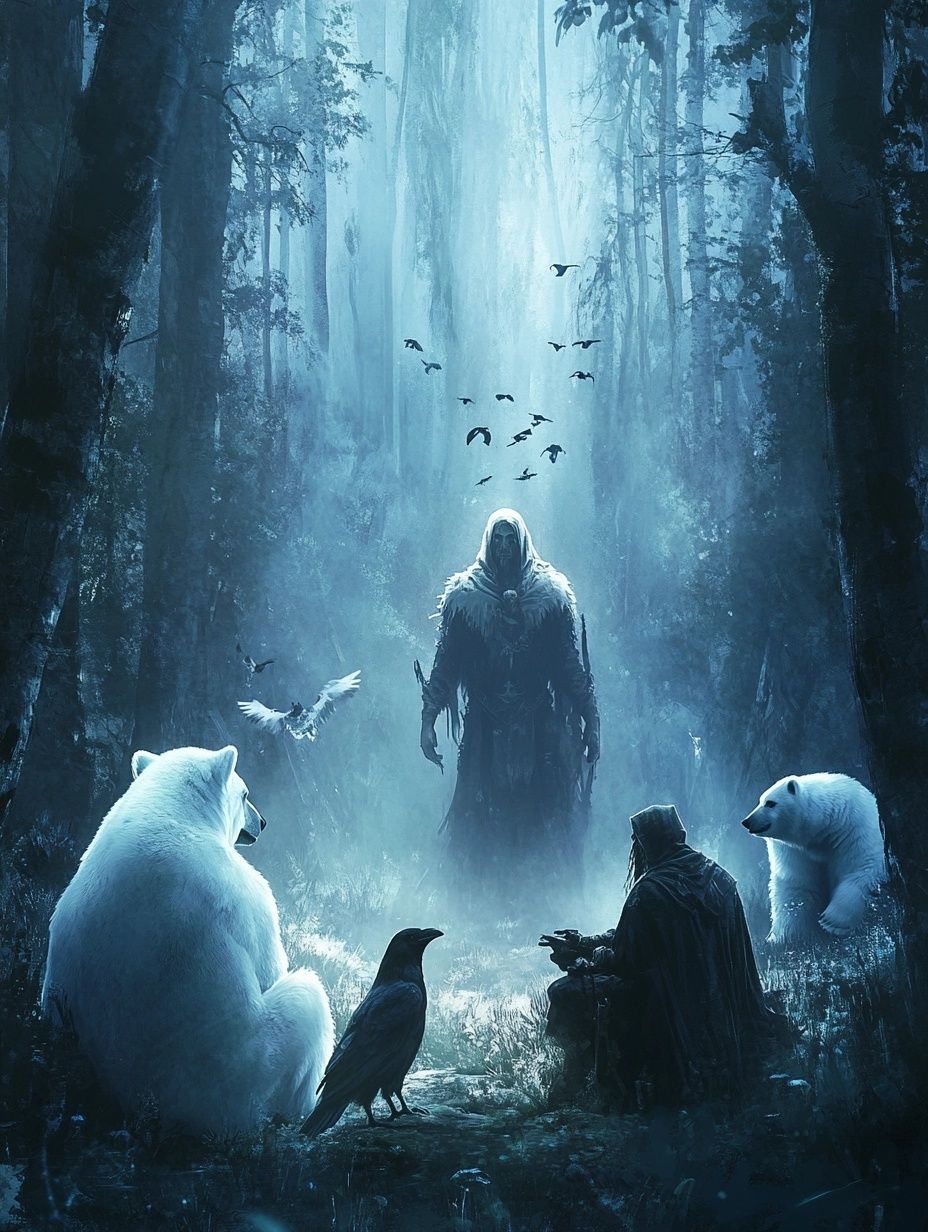
Tornarsuk, Tuurngait and the Angakkoq (shamans):
I already mentioned the importance of the Angakkoq, or shamans, in Greenlandic mythology.
There was some question over this from the early researchers, but stories were told that the Angakkoq were supported by a powerful spirit called Tornarsuk, who has control over minor spirits called Tuurngait (alternatively, Tornat, Torngak). The Tuurngait act as helpers and protectors of the Angakkoq.
With their help, the Angakkoq were able to gain special abilities, called angakoonek (or "wisdom" or "power"), that allowed them to communicate with the invisible rulers (Inua), usually to help the community.
Descriptions of Tornarsuk vary - from finger-sized to bear-sized - but the early texts noted that it wasn’t always clear whether the Tornasuk and the Tuurngait/Tornak were in fact one and the same.
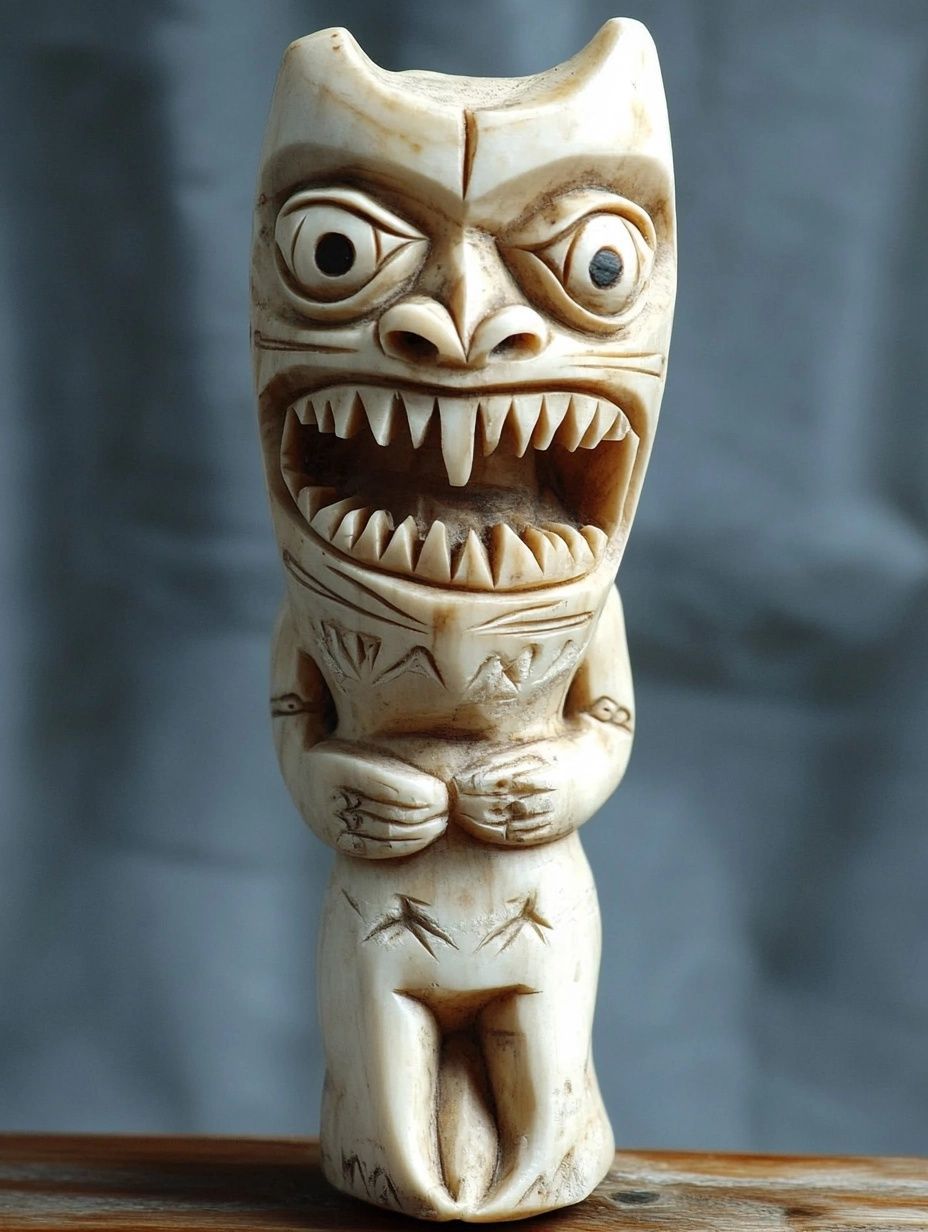
Amulets, taboos and the Tupilak
Amulets hold special protective powers in Greenlandic belief, often linked to animals or spirits.
A common example is the Tupilak, an object created to harm an enemy but also used to protect the wearer. Amulets are passed down through generations and are believed to hold the essence of those who made or wore them.
Witchcraft and Ilisiineq
Ilisiineq is a type of harmful magic (v.s. the shamans’ good magic), often seen as selfish and dangerous, used to bring misfortune or illness to others for personal gain.
Practitioners of Ilisiineq - or witches - are believed to channel dark forces and disrupt the community’s wellbeing.
To counter this, shamans perform rituals to ward off or exorcise harmful magic, acting as protectors of the community.
7. Religious beliefs and social order
Life and Death Rituals
At the time they were recorded, Greenlandic Inuit rituals around life and death were designed to maintain balance with the spirits.
After childbirth, mothers followed strict food and behavior restrictions to protect themselves and the newborn from harm.
Mourning practices were also careful, with the deceased’s belongings aired out to allow their spirit to move on peacefully. Funeral rites varied, but typically involved placing the body in a way that guides the soul to the underworld.
For those seen as evildoers, however, their bodies might be dismembered or scattered, preventing their souls from finding peace.
Cultural Laws
Cultural laws in Greenlandic society were deeply tied to beliefs in spiritual justice.
These customs reinforced social harmony and discouraged conflict through the fear of spiritual consequences.
For instance, family reputations are guarded by the spirits of ancestors, who are believed to protect or punish based on the actions of their descendants.
Naming customs and funeral rites also foster unity and respect for tradition. This system of beliefs serves as both social order and moral guidance, keeping the community closely aligned with its spiritual roots.
Summary of themes: Greenlandic mythology
There are hundreds - thousands - of folktales that have been passed down by Inuit elders from generation to generation, a tradition that continues today.
Some early researchers noted that Greenland Inuit stories focus heavily on themes of survival and the legends "hero-tales" - that often blend together - can generally be separated by these themes:
- Visits to "fabulous tribes": this group of stories often involves hunters traveling to distant lands and encountering strange tribes or creatures. The tales frequently depict adventures and battles, such as stories of the Qivittoq, scaling the Artic wilderness alone.
- Moral lessons: there are hundreds and maybe thousands of Greenlandic folktales that typically convey moral lessons and social customs. These tales are often exaggerated and may crossover with other parts of folklore like the mythical creatures.
- Cultural connections: Inuit hero-tales share similarities with the stories of neighboring indigenous peoples and reflect the specific social conditions of the Inuit. These tales emphasize social norms, like marriage customs, communal living and the consequences of violating these norms.
It was noted that while some of the stories are widespread among various Arctic tribes, they have distinct Inuit characteristics relevant to Greenland, reflecting the local culture’s social and moral framework and giving insight into Inuit life, customs and worldview.
That's a wrap...
If you've made it this far, thank you for taking the time to read (or scan) through this article - i hope you enjoyed learning about some of the traditional mythology of Greenland as much as i did!
During my research, i noted the many different ways that names have been spelled, apparently changing both over time and across different Inuit cultures and story variations. I've included some of them in each story for context and done my best to give the Greenland specific version but there are some differences between source texts.
My intention - always - when trying to capture the folklore of different cultures, to present old stories afresh for new eyes, is to do so with utmost respect and accuracy. I welcome your feedback (hello@mythfolks.com) and look forward to following up with more Greenlandic folklore articles soon!
Article sources
- Pedersen, Birgit Kleist. "A narrative on narratives in contemporary Greenland." Proceedings, 2009.
- Brun, Eske. "Greenland." Arctic 19, no. 1 (1966): 62-69.
- Kreutzmann, Maria Bach. Bestiarium Greenlandica: A Compendium of the Mythical Creatures, Spirits, and Strange Beings of Greenland. Illustrated edition. Vancouver: Eye of Newt Books, 2022
- Williamson, Karla Jessen. "Uumasuusivissuaq: Spirit and Indigenous Writing." in education 20, no. 2 (2014): 135-146.
- Boas, Franz. “The Folk-Lore of the Eskimo.” The Journal of American Folklore 17, no. 64 (1904): 1–13.
- Kumlien, Ludwig. "Contributions to the natural history of Arctic America, made in connection with the Howgate Polar Expedition, 1877-78 Ethnology. Fragmentary notes on the Eskimo of Cumberland Sound." Bulletin of the United States National Museum (1879).
- Laugrand, Frédéric B. and Oosten, Jarich G.. "6 Inuunngittut, Non-human Beings from the Land and the Sea" In Inuit Shamanism and Christianity: Transitions and Transformations in the Twentieth Century, 168-198. Montreal: McGill-Queen's University Press, 2010. https://doi.org/10.1515/9780773576360-009
- Egede, Hans (1818). "The Greenlanders' Astronomy, or their Thoughts concerning the Sun, Moon, Stars, and Planets". London: Printed for T. & J. Allman. p. 206.
You might also like
Explore more folklore tales from around the world
10 tales from Colombian folklore
From the infamous to the not-so-famous, learn more about the folklore of this virbant South American country here.
Folklore from all 6 New England states
Dive deep into the dark tales and ghost stories of northeastern USA folklore.
Take a quick trip into the mystical and sometimes bizarre world of Portuguese folklore.
16 short tales from Indonesian folklore
Including the baby born from a cucumber - read about it now!


